Introduction
This is an abridged description of a trip to Burma in November 1984. The intention is to give a firsthand personal experience of how I did get to and through the country. Despite the fact that I did not book anything in advance at all it was no problem getting any means of transport or accommodation on the same day. However, the flight from Bangkok and within Burma I booked a couple of days in advance. I only did some kind of pre-planning in so far that I wanted to be back in Rangoon one day before my return flight to Bangkok (from where I subsequently went on my Thailand round trip).
At the time of writing all this, more than 24 years have passed. But actually cultures and customs have not changed that much in this still backward country, except for the names: Burma is now Myanmar and Rangoon became Yangoon, beside many other name changes. That's all what the still ruling communist junta has accomplished beside suppressing more and more any opposition (and killing demonstrators, as you could have seen on television recently). And the country is getting poorer and poorer (but the junta was thwarting food deliveries to the people most hit by the last devastating typhoon).
So why come here? Amnesty International and Human Rights activists don't advise because they think tourism supports the junta. Yes, package tour tourism will fill the junta's coffers (first class hotels are owned by the government). But the normal people will benefit from travelers trying to circumvent the national institutions by using local transport and private guesthouses and they are having the opportunity to communicate with the rest of the world (via the travelers) not censured by the junta.
I admire the wonderful people of Burma, especially in the countryside whom I met now and then: always kind and smiling, even laughing, wherever I went. And I went there because of the normal people and their customs and beliefs in Buddhism so deeply that they cannot harm a fly. What a discrepancy to the harsh rule of the military.
How can the junta be harmed? I suggest that the world community should ban the blood rubies (and other gems) from Burma like they did with the Conflict or Blood Diamonds of Sierra Leone. Not using the new name Myanmar for Burma, because introduced by the junta, is not very harmful to them.
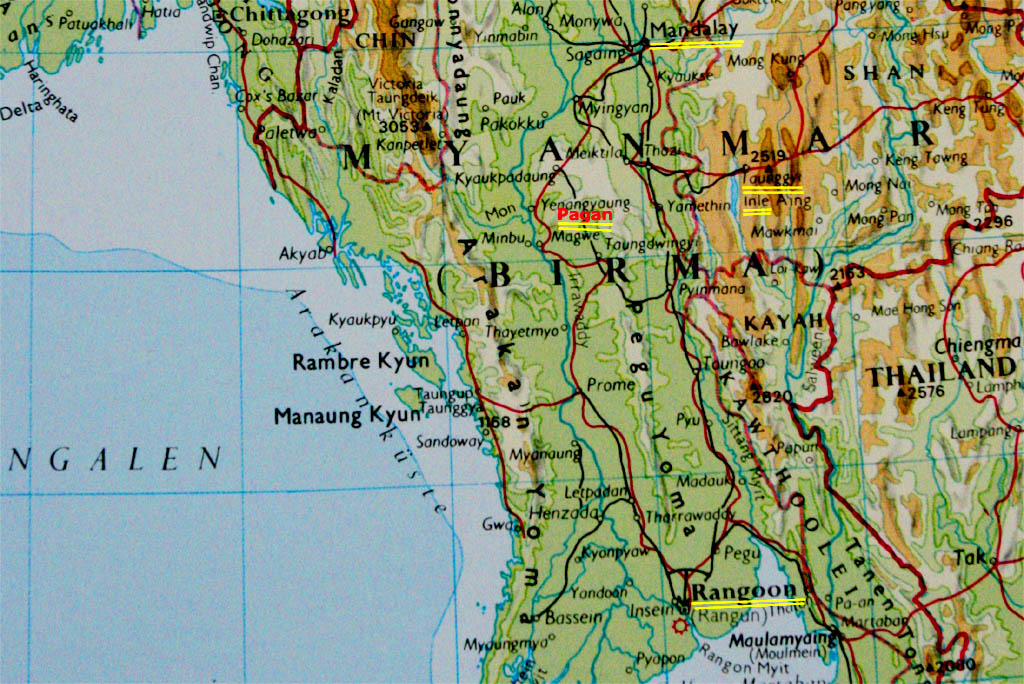
Rangoon
I booked the flight with Burma Airways from Bangkok to Rangoon at a small travel agency in the Rumbutree road in Bangkok, a parallel road of the Khao San road, for around 220 DM (booking in Germany would have been more expensive). I had already acquired the visa for Burma in Germany beforehand, but only for a maximum stay of seven days (today it's thirty days).
It was in the afternoon when I arrived at the airport in Rangoon after a one hour flight. Since I only had a shoulder bag I didn't have to wait for any checked-in luggage and could go directly through Passport and Customs Control far ahead of all the other passengers. Except for one lady from Sweden with the name of Birgitta Anderson from Göteborg who also had nothing but a small bag and we had the same aim: getting around in Burma in the fastest possible way in seven days by seeing and experiencing as much as possible.
First we took a taxi to town. The taxi driver also was a dealer. We negotiated about the price of the bottle of whisky and the 200 cigarettes I bought for 20 DM duty-free at the airport in Bangkok before my departure. I don't remember how much Kyats I finally got but it was enough for all the expenses incurred during the next seven days, except for the tickets of the government controlled airline and railway. It was a double good deal: Black market price for whisky and cigarettes and black market exchange rate for the American Dollars.
We found a room each in the YMCA in Rangoon. Next was getting out of here as soon as possible so we went to the state owned Burma Tourist and were lucky to get the last seats on a plane to Pagan the next morning. It was a scary and shaky flight in the middle of a storm with a lot of rain coming through the roof of this old vintage plane.
Remark: The photos on the right side may not be correctly adjusted if you use Mozilla Firefox or Chrome. I propose to use the Explorer of Microsoft instead.
Click the small picture to get it enlarged
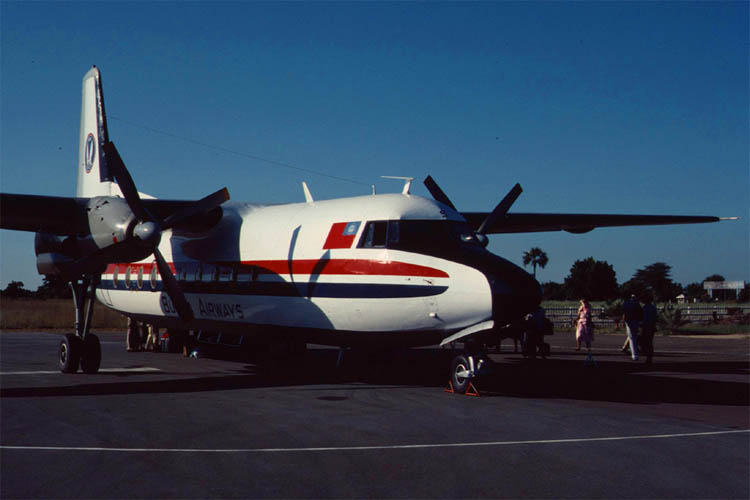
| Our plane to Pagan
|
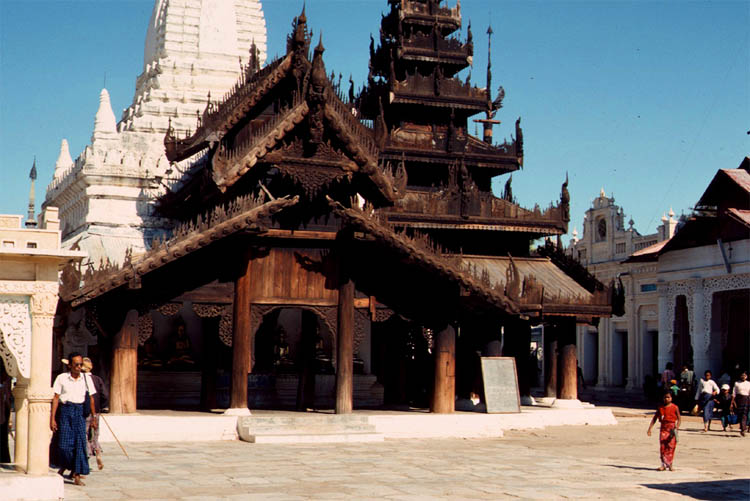
| Safely arrived in Pagan
|
Pagan
When we arrived in Pagan it was sunshine all over. Not so much for an American lady who missed her checked-in luggage on arrival. Always shouting hysterically: "I knew it. I knew it". But it turned out that the crew forgot to unload it.
We, Birgitta and me, checked into in a small guesthouse in the middle of the main village. Then we rented a horse drawn carriage with a guide and rushed off to inspect as many of the magnificent temples as possible.
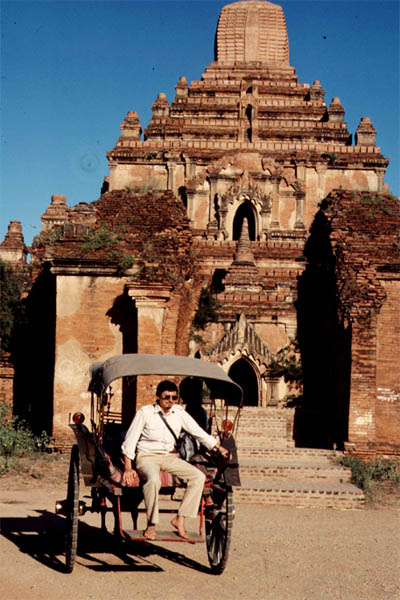
| The only way to get around is by a carriage
|
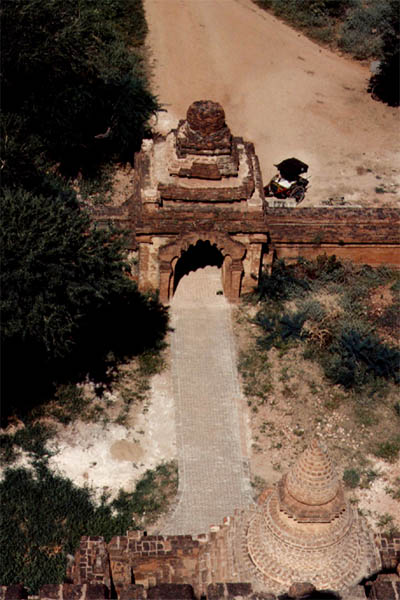
| to climb a temple needs your own courage
|
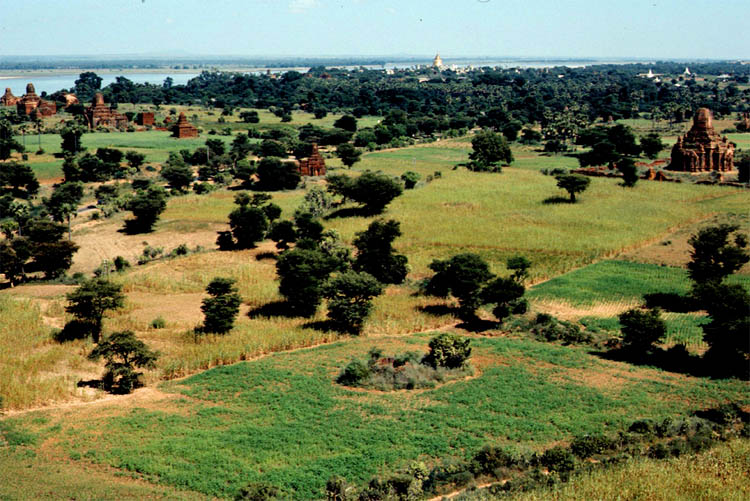
| A fantastic view you have from the top
|
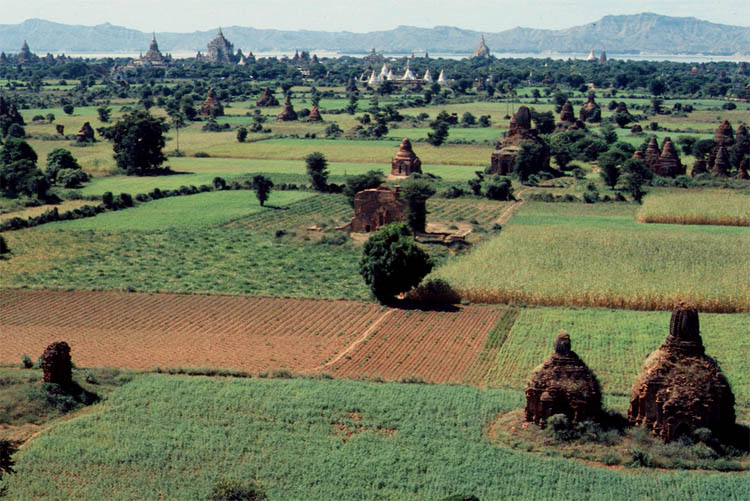
| counting all temples is not an easy job
|
Pagan originally was a big city with around 20 000 temples scattered all around with the houses or dwellings for the inhabitants in between. It was destroyed in 1287 by Kublai Khan. Whatever was left was even more decaying especially the houses made of wood instead of stone as the temples of which now 5000 are still standing. Imagine Berlin destroyed completely (it almost was) except for all the churches and cathedrals (and maybe some government buildings, like the Reichstag?) with farmland in between now, it would look a little like Pagan today.
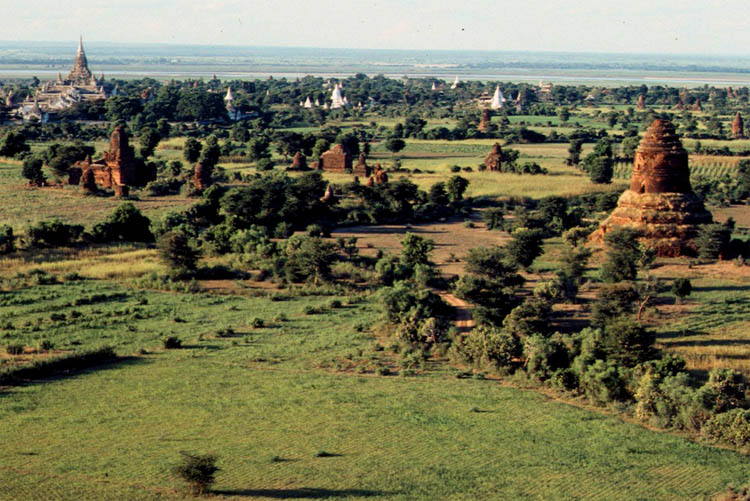
| That city must have been really big
|
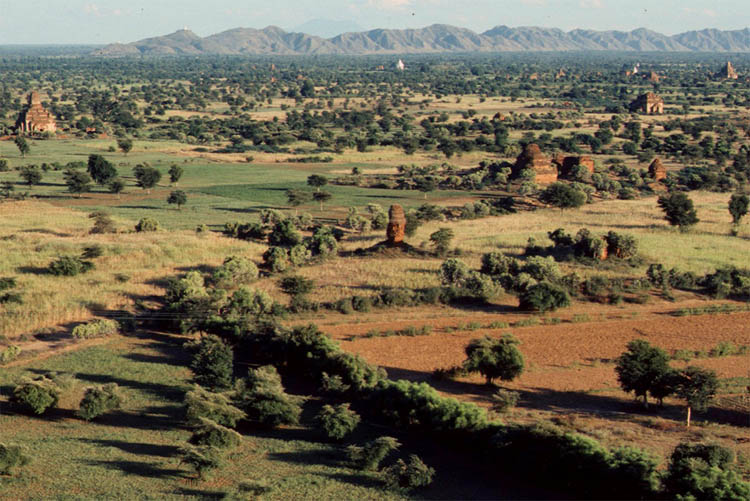
| until after Kublai Khan had conquered it
|
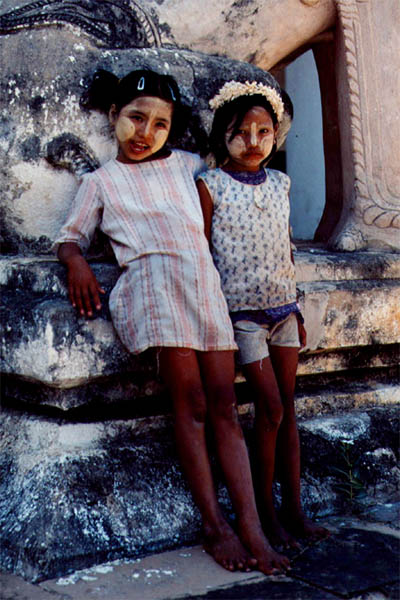
| While the girls were watching us
|
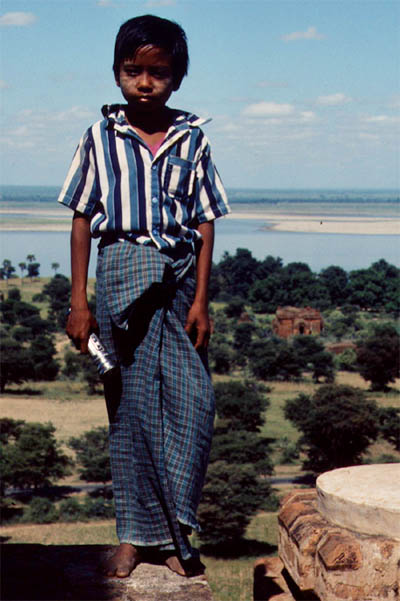
| the boy showed us how to get up
|
We could get into and onto all of the temples around, sometimes crawling and squeezing through small passages and tunnels to reach the top. It was really exciting and you felt like an archeologist just having found a lost city. It all looked already deserted, nobody else was around (except some kids).
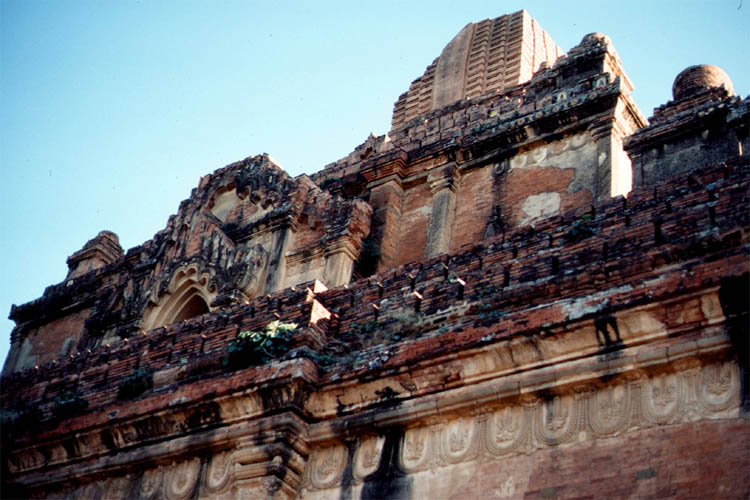
| Because some were really steep
|
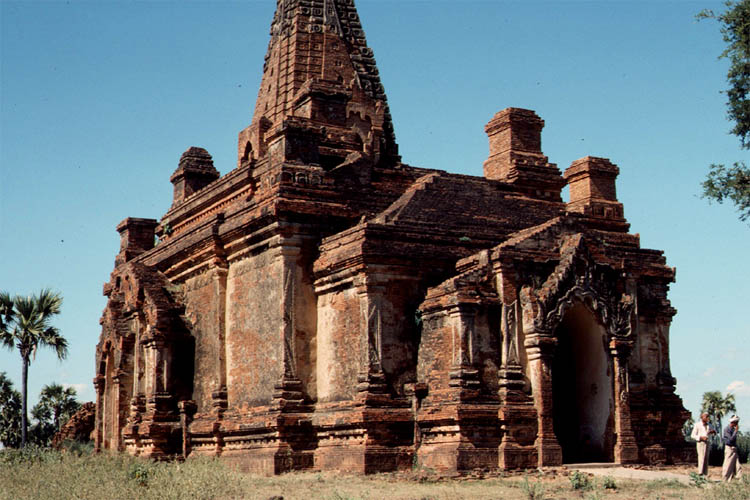
| for some ways up a guide you need
|
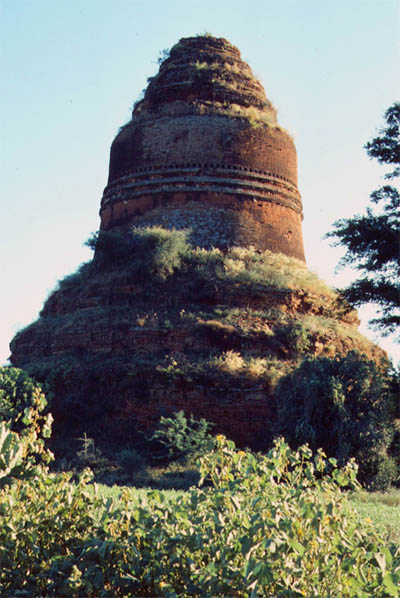
| For some there was no way to climb
|
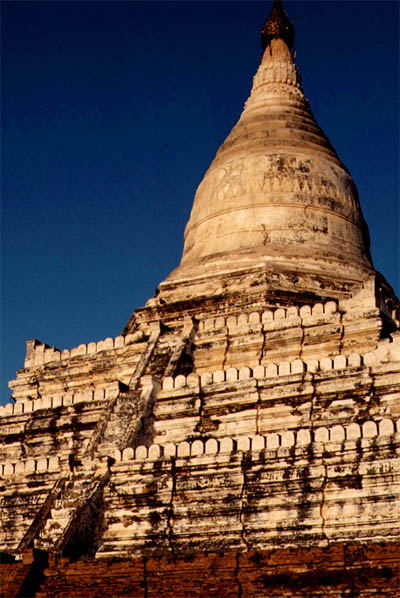
| on another one just to the third flight
|
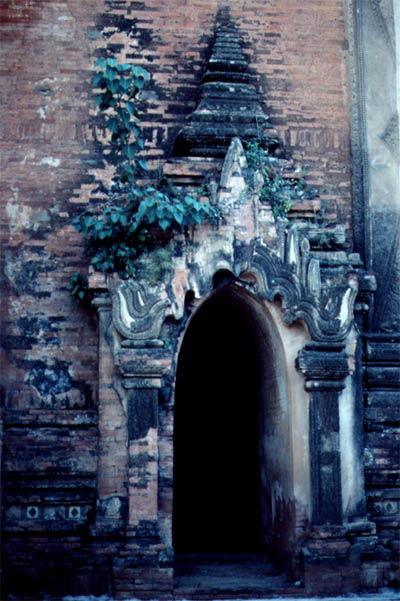
| Some temples you can go through a gate to get inside
|
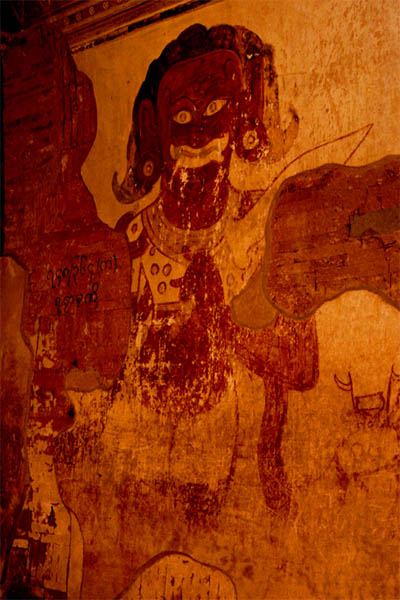
| but don't be scared if a demon shows up in the flash light
|
We also visited one of the small villages, where the farmers were living, who tended the crops in the fields between the temples. Also some handicrafters have settled down here to sell their products, especially wood carvings and their famous lacquer ware.
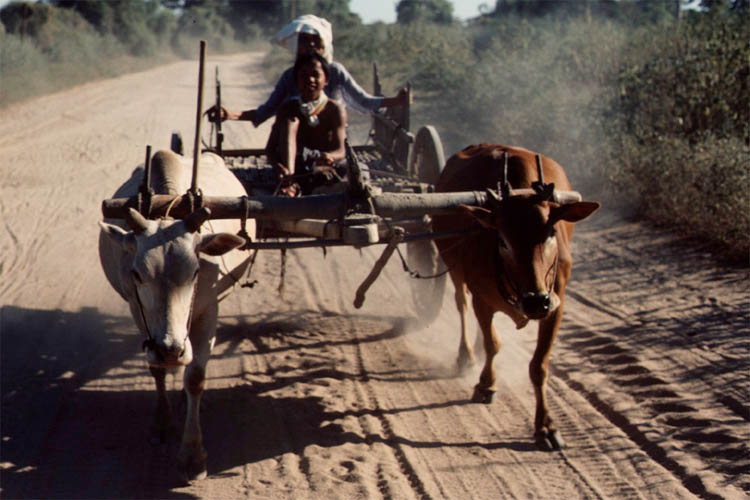
| Back to the dusty road
|
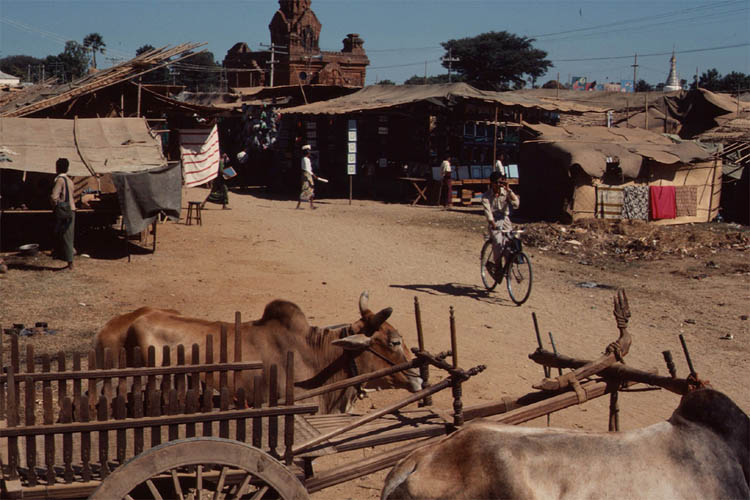
| visiting a dusty village
|
Then the sunset did get closer and closer and we had to hurry to see it from the Ananda Temple, but in vain, the sun was ashamed, going down behind clouds.
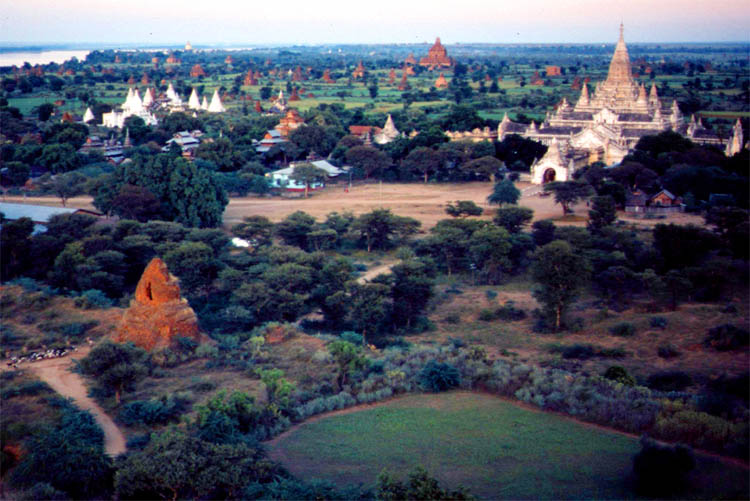
| Sunset from the Ananda Temple
|
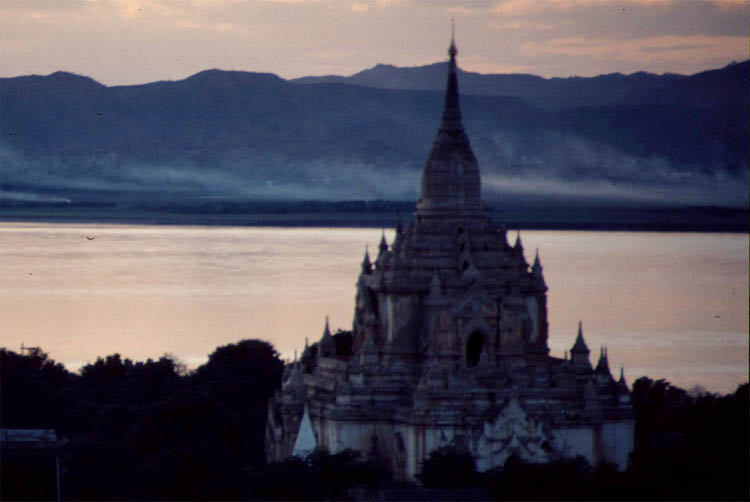
| and last look at another temple
|
In the evening we made another experience: an original Burmese marionette theater and we were the only spectators.
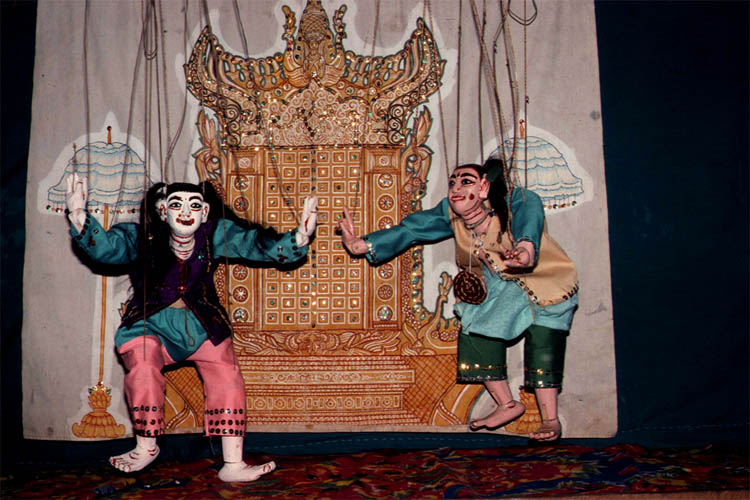
| Watching a marionette play from the first row
|
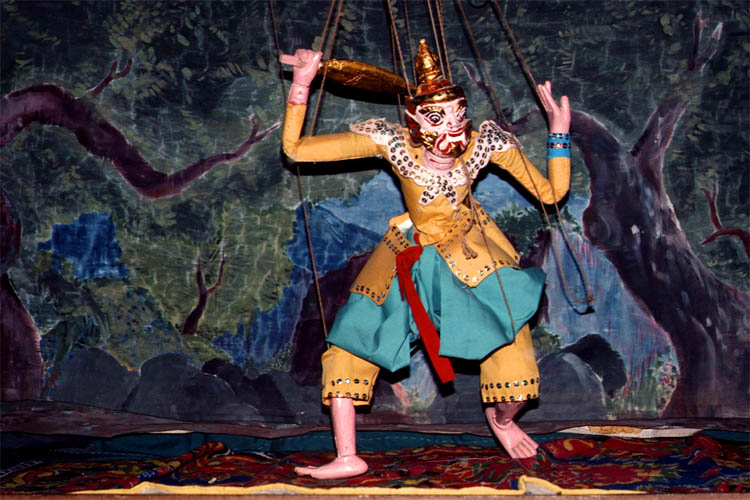
| Demons are always part of the show
|
Taunggy
Next day we had to leave for the next destination of our seven days circuit. But not strait on the road to Mandalay yet but crossing the road and rail at Thazi and continuing east on the way to Taunggy, while now performing an eight. The kind of transport was a challenge, we had to sit like sardines in the back of some kind of a small delivery truck with a wooden bench on either side. Getting out at every stopover was a relief.
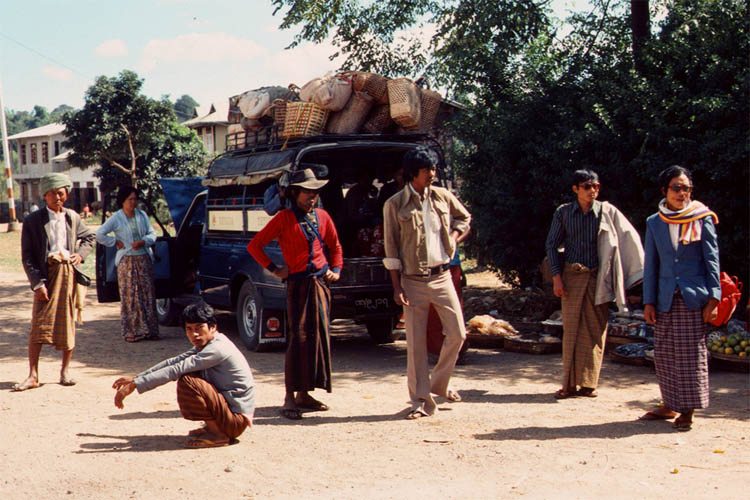
| Jeepney ride
|
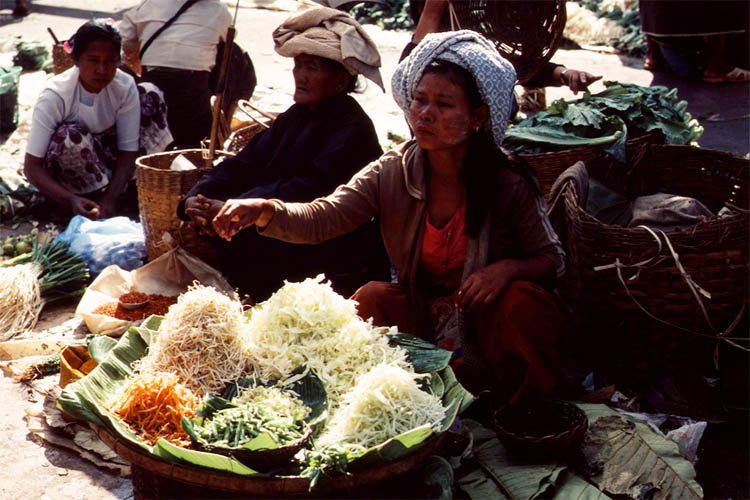
| to Taunggy
|
Taunggy was the capital of the partially autonomous region of the Shan tribe located close to the border to Thailand, which is just on paper but in reality there is no physical border between the Shans in Thailand and the Shans in Burma, thus they almost move freely back and forth and thus smuggle everything from there what you can't get in Burma. In a couple of weeks I would look over the supposed border from Thailand (see Thailand report).
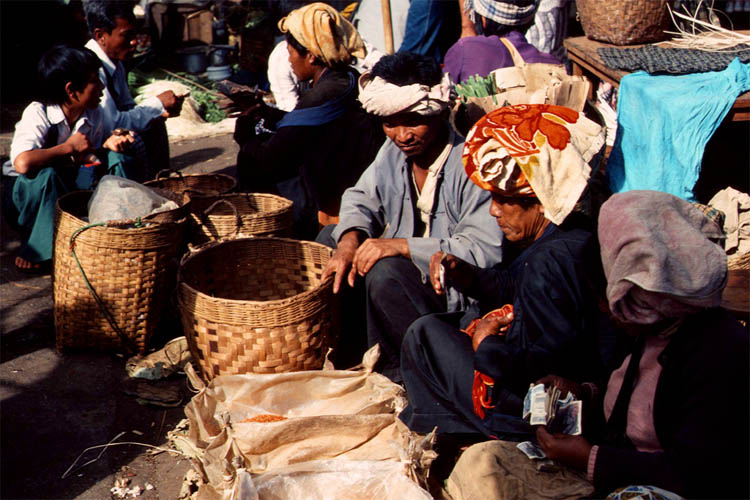
| A peaceful market with smuggled goods
|
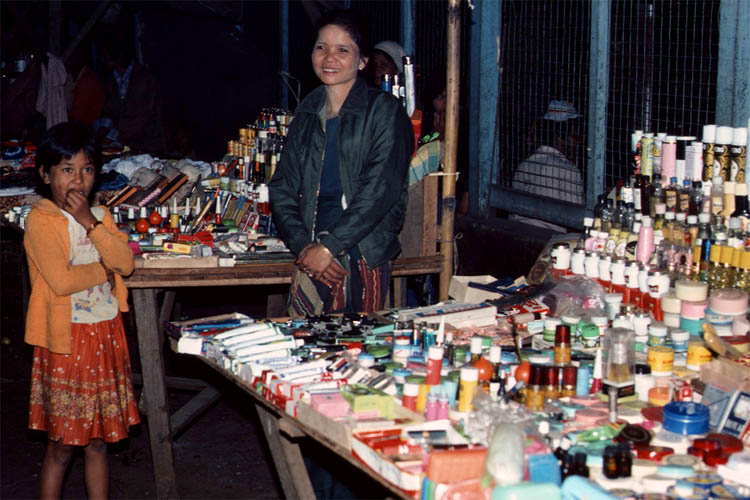
| from the nearby Thailand border
|
Beside the market there was not much else to see. There was a festival coming up with workers already starting with the construction of stalls and any merry-go-rounds. We would have missed this town if our "truck" would have delivered us directly to the Inle Lake, actually our preferred next destination on the list. Since we arrived late there was no way to continue but stay in a hotel that night in Taunggy.
So we had to endure not only this town but also the most scary situation I experienced in my life: I believed that I will be shot.
It was in the evening, after dinner, when we were sitting in the television room on the second floor to watch a movie. All of a sudden we heard many gun shots. Still happening outside not far away but coming closer.
Are we in the middle of a Shan uprising for more autonomy from Rangoon, which is going on for years?
Then a sound of a shot from the floor below us. We ran to Birgitta's room and locked the door. Shouting, running and more shooting along our corridor. Expecting any time that somebody would break through the door with a gun pointing at us, or maybe shooting right away.
Then the shooting stopped. Commotion outside. Slowly phasing out, into the street, I suppose. Slowly opening the door. Nobody on the floor. Nobody there to ask. We stayed together, trying to read. All quiet. Soon we went to bed and slept.
Next morning we did get up early. We asked the hotel staff what happened last night. The answer was that local Shans were chasing and trying to shoot a festival construction worker who had encountered a local girl who happened to be the girl friend of one of the Shans. And that unfortunate guy also happened to stay in our hotel, unfortunately. You can believe it or not. We heard another story later on.
We walked out of the hotel and passed groups of soldiers positioned at several intersections. We asked again, but this time only for the bus station.
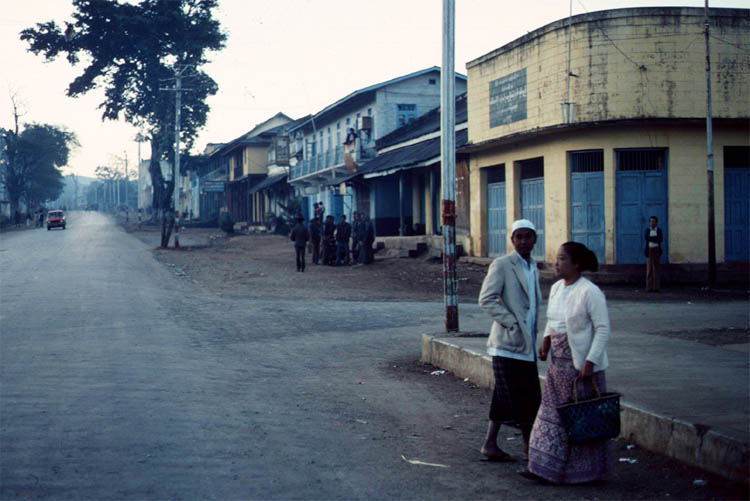
| After the shootings the streets were almost dead
|
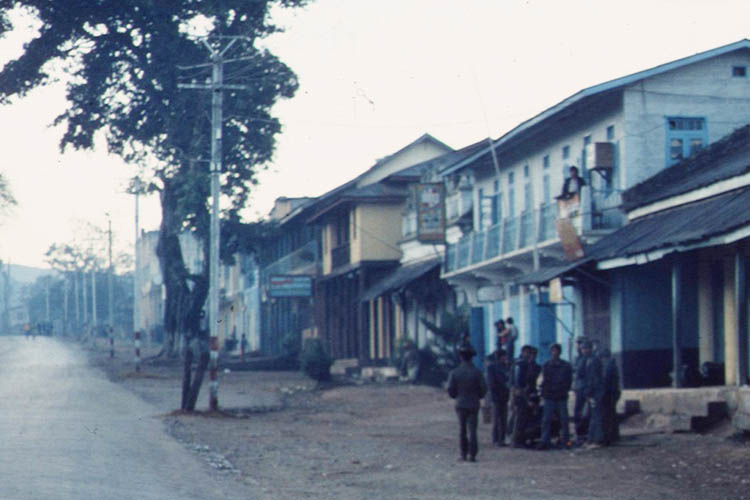
| This was the hotel where we may now be dead
|
After a short "truck" ride we arrived in Yaunghwe at the Inle Lake, finally our actual destination after Pagan. We checked into the Inle Inn and rushed to the boat pier for a lake cruise. We were lucky to join two couples and shared the rent and off we went.
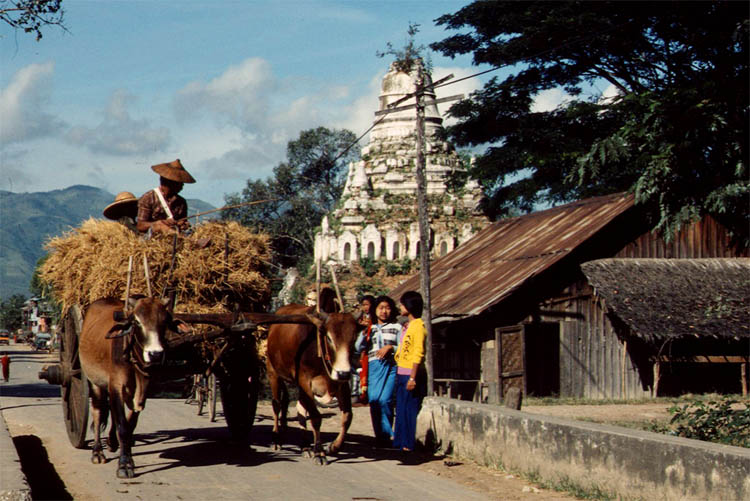
| We escaped not with this kind of a transport
|
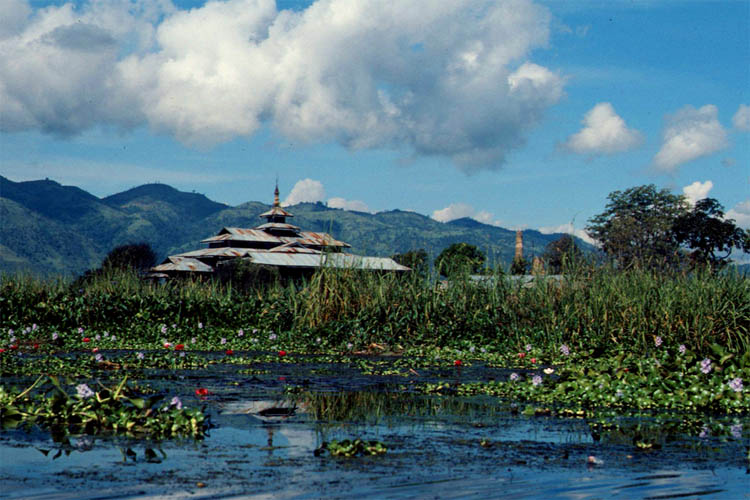
| but by bus to the closest town of Lake Inle
|
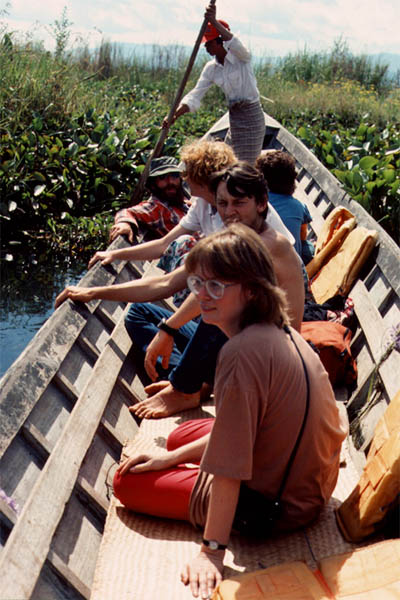
| Then we hired a boat with two other couples
|
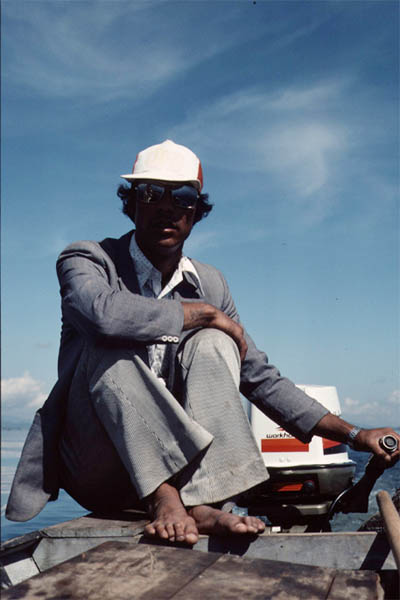
| and our boatman didn't row but roared us over the lake
|
The Inle Lake is the largest lake in Myanmar and very flat, around three meters deep, and famous for their floating gardens and of course their one-leg rowers. Can you imagine rowing a boat like that a whole day? They even had boat races during festivals. Then better sit in the boat, even if it is not so comfortable. But it was interesting watching other boats and the natives going after their businesses.
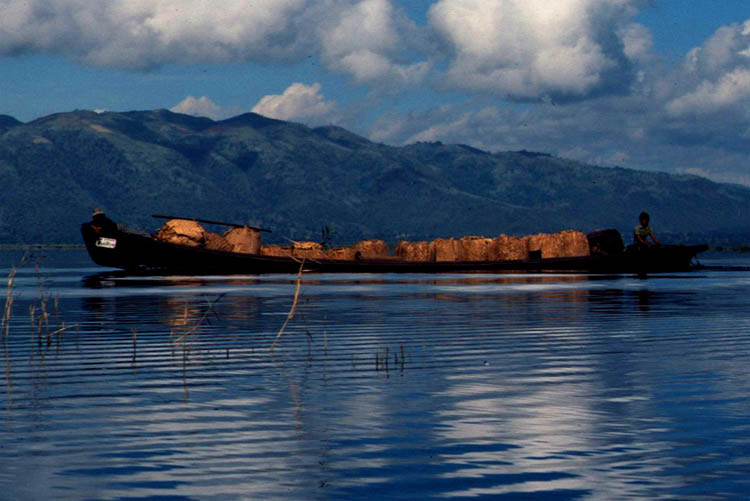
| Busy traffic already on the lake
|
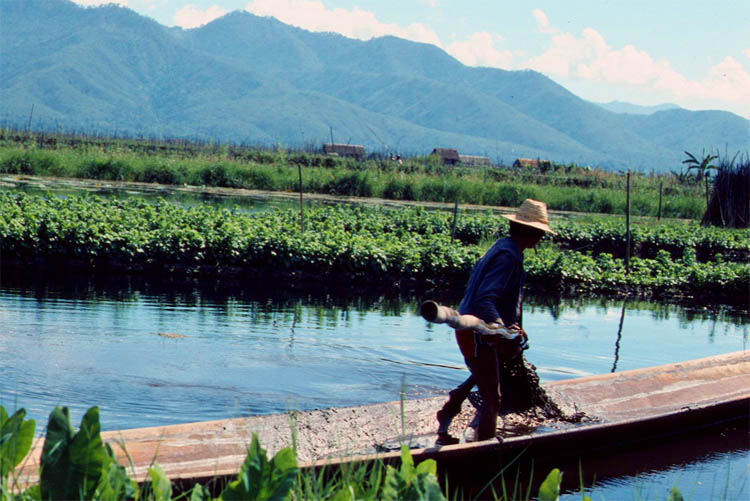
| Busy man working on the lake
|
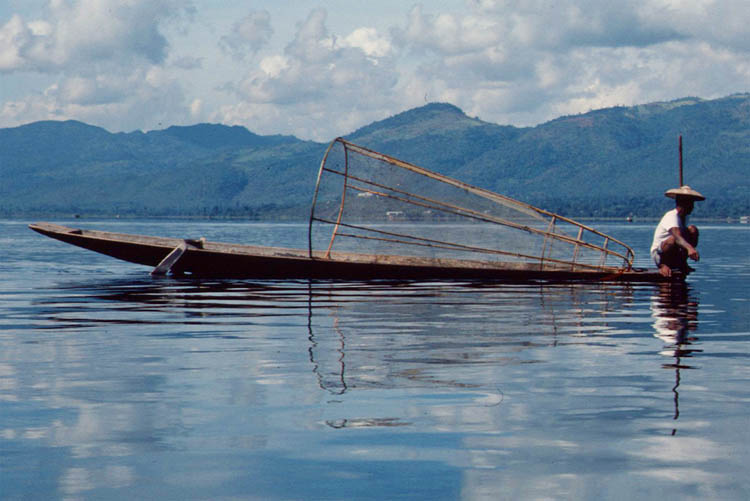
| This fisherman is contem-plating whether to lower his cage
|
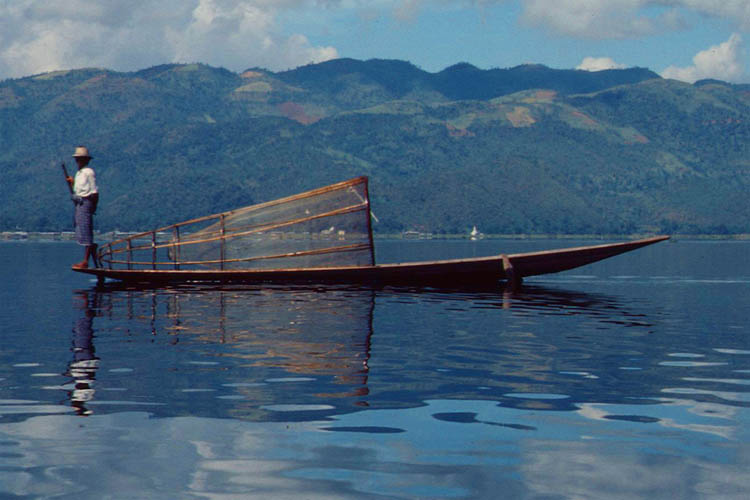
| No catch? A one-leg rower fisherman rows to another place
|
One-leg rowing is not easy. Not just a balancing act but also very strenuous: standing on one leg while embracing the paddle (and rudder at the same time) with the other leg. This is unique in the world.
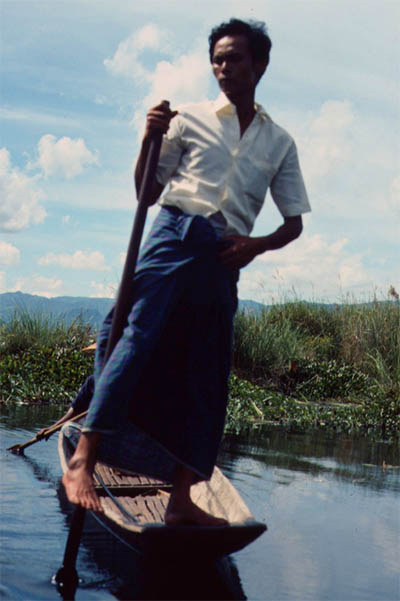
| Just by looking at the one-leg rower I am close to exhaustion
|
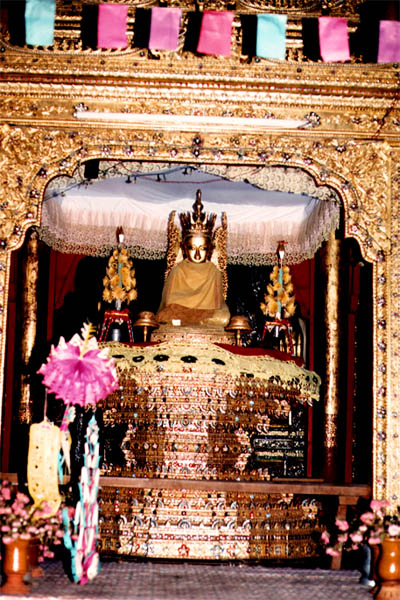
| I had to meditate in front of the Buddha to get some relaxation
|
After cruising over almost half the lake we came to Nga Phe Kyaung, the most famous monastery in the lake. We did get off the boat and went inside. Beside many cats strolling around, we only saw two monks, one was busy and the other showed us the monk's quarters. Then after a donation we were invited to have tea and some kind of crackers.
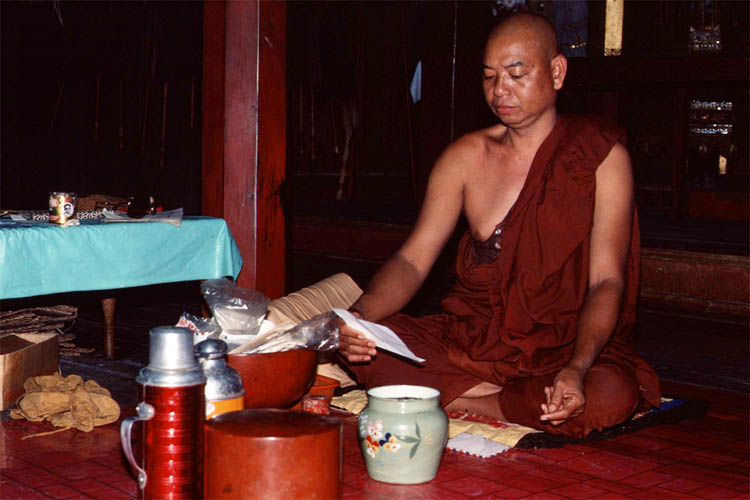
| Has the monk not all his suthras read yet?
|
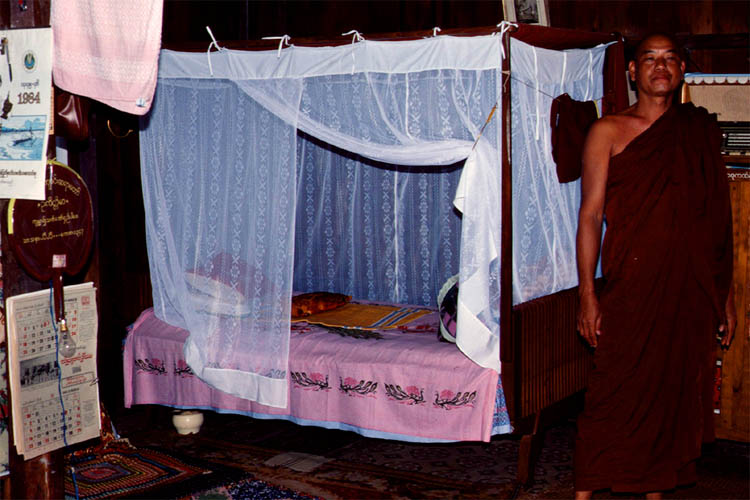
| this one proudly shows us his medieval bed
|
The monks didn't have much to do beside meditating and praying. Though, one of their pastime is caring for the many cats and training them to jump over their outstretched arms, for example (sorry, no photo). But caring for their guests they had their own servant.
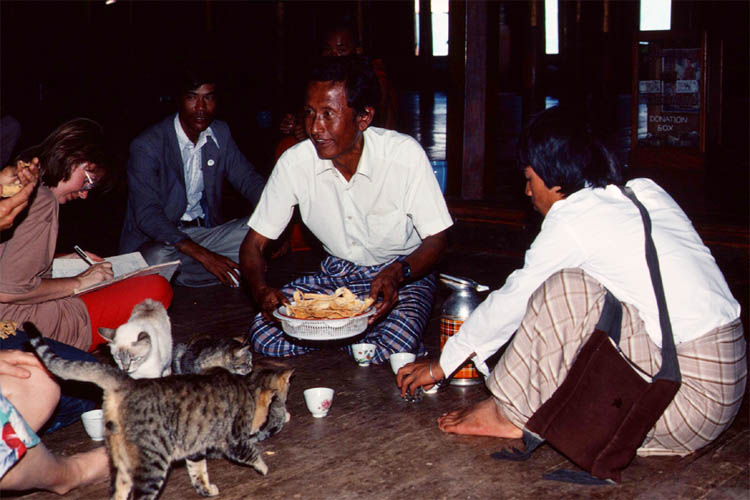
| Then we sat down with the cat and tea ceremony
|
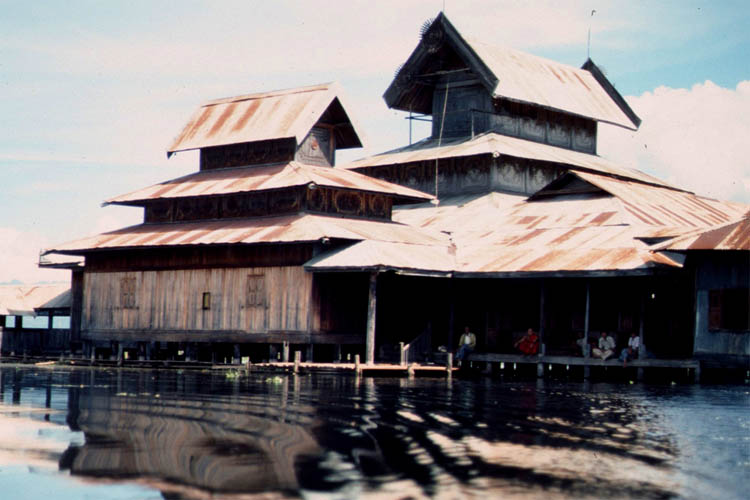
| after that we had to leave the monastery
|
Next destination was the village Ywama with its floating market, but the vendors had not much to offer. No customers with their boats were around. Also no tourists except for us but we didn't buy much, only bananas. It seemed to me that the few market boats were just set up for the tourists (and completely ceased by the time I came back in 2004).
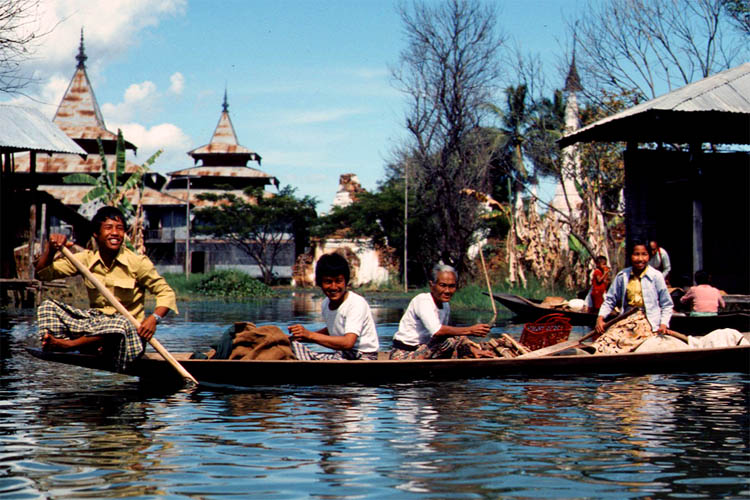
| Seemingly happy people laughing at us
|
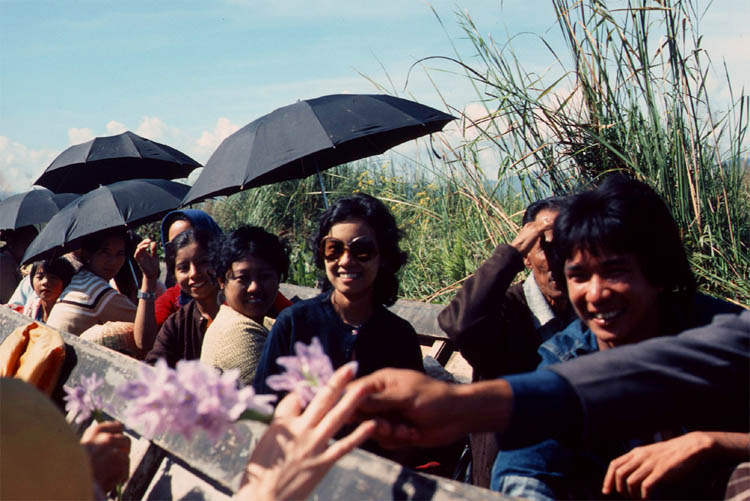
| Some are even shaking hands with us
|
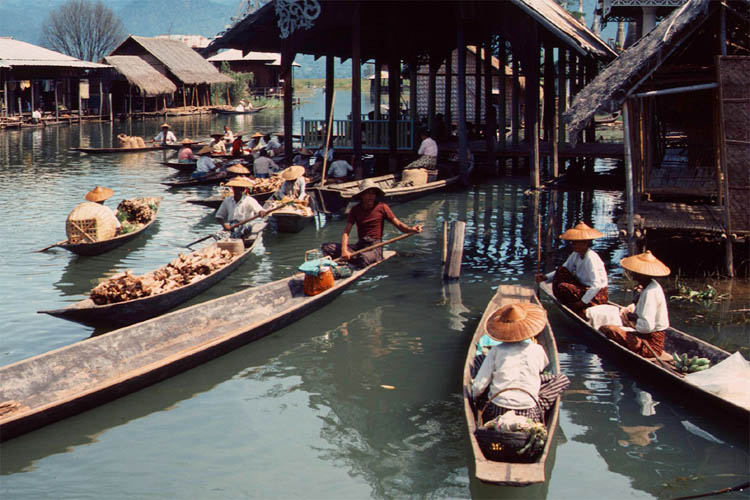
| Selling their produce on the floating market
|
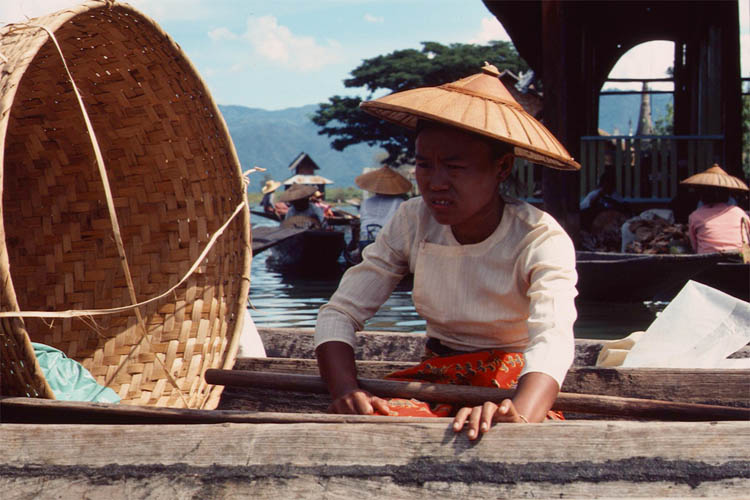
| Maybe she is selling nothing but a basket
|
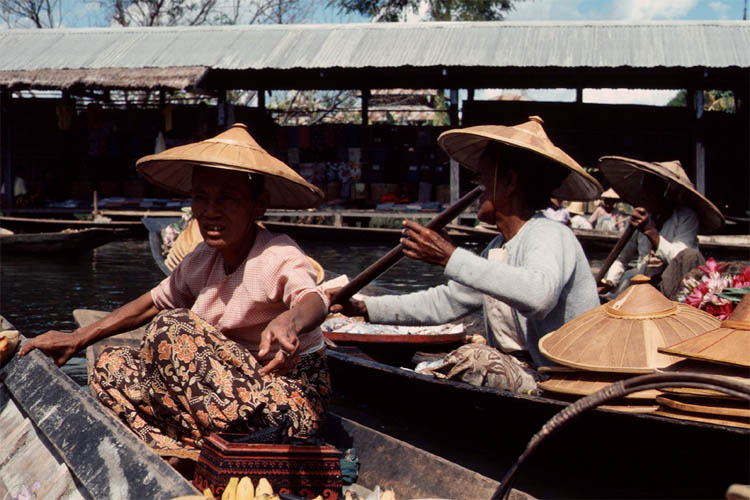
| Maybe we should buy some bananas for lunch
|
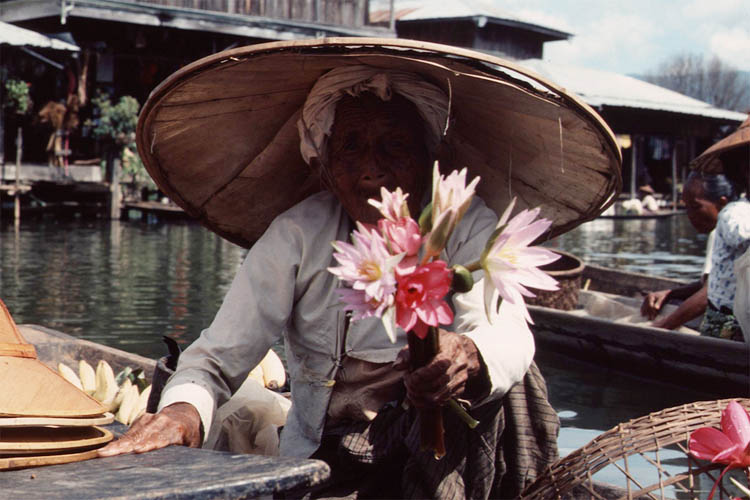
| but we have no need for a flower bunch
|
The village itself is made up of many houses, mostly on the water and built on stilts. Some had a souvenir shop selling handicraft made by themselves. In the middle of the village is also a market place but no real market was held there today. This town is often visited by the tribes people living around.
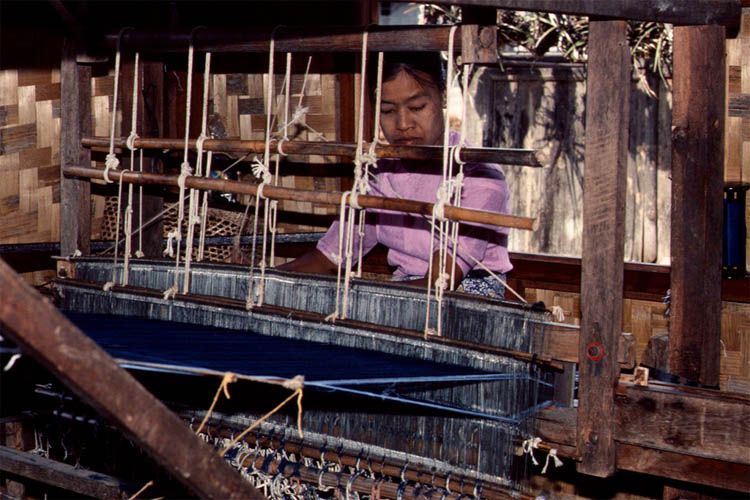
| Still making both ends meet with their weaving
|
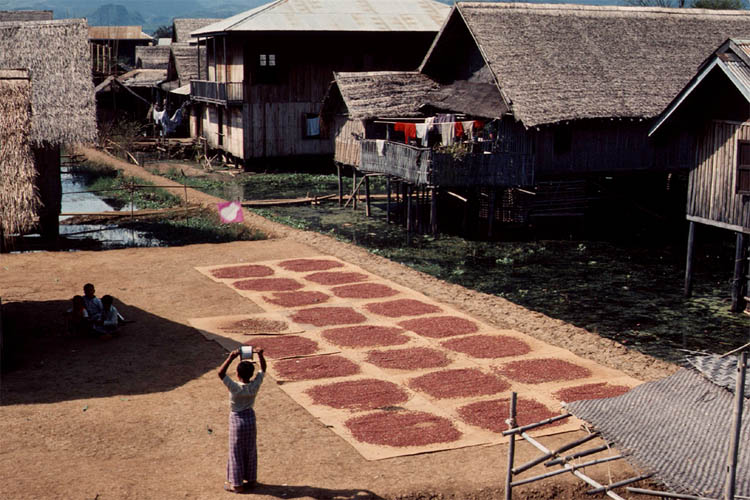
| or making their living from their harvesting
|
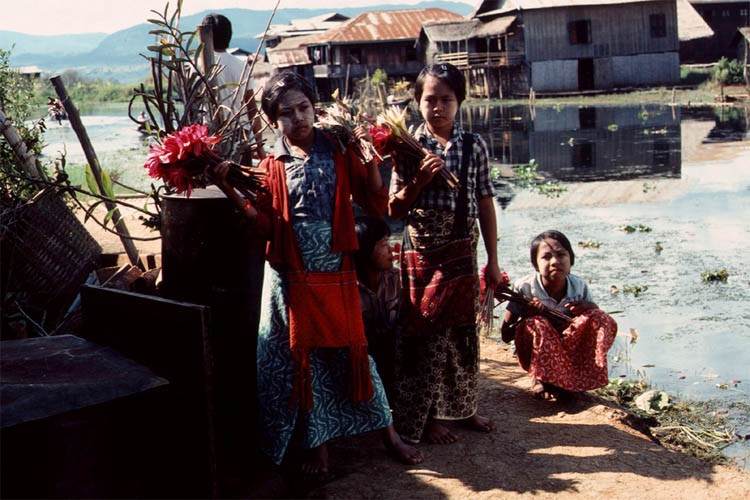
| Old or young, is selling flowers really such a good business?
|
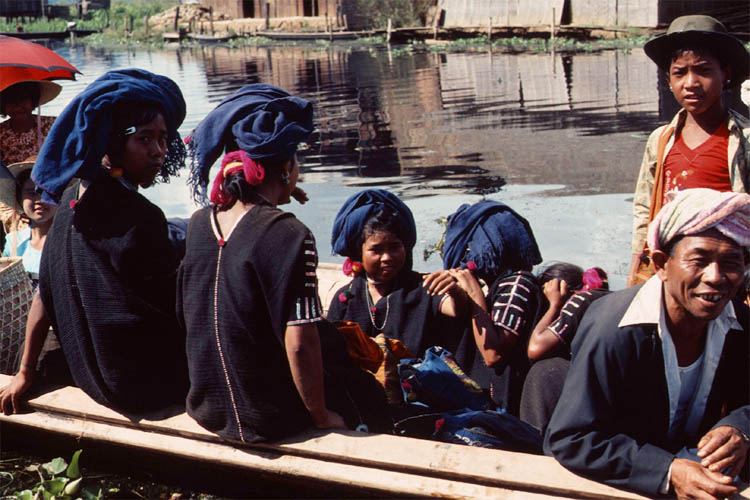
| The first indigenous people already leaving for their villages
|
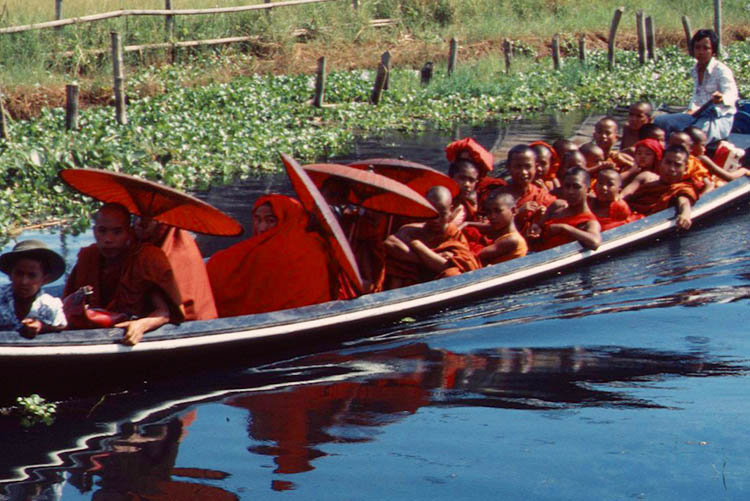
| Young monks coming home
|
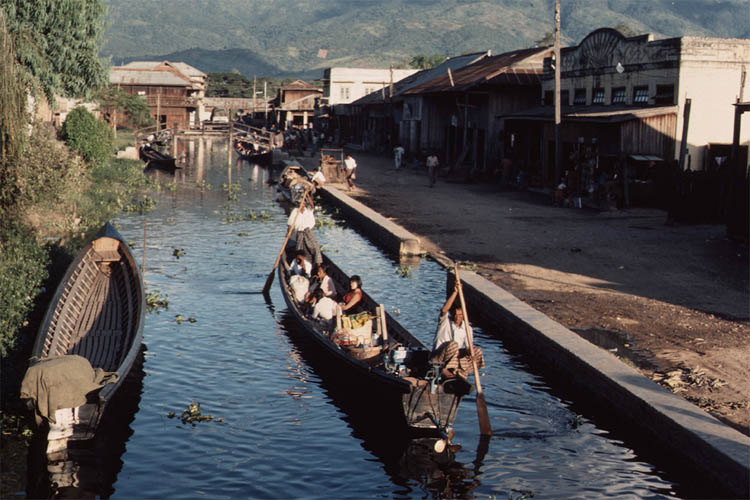
| We also had to get back home
|
Back in Yaunghwe we were strolling around town enjoying the evening sun as it sets slowly down. A peaceful place with country life style. Young people playing their special volley ball or letting kites fly high. And young monks going from house to house to collect their evening meal. It's a holy honor to give whatever you can spare, more so than to take whatever you can get (how contrary to our global capitalism and greedy CEOs). And there is still enough for everybody, at least in this part of the country.
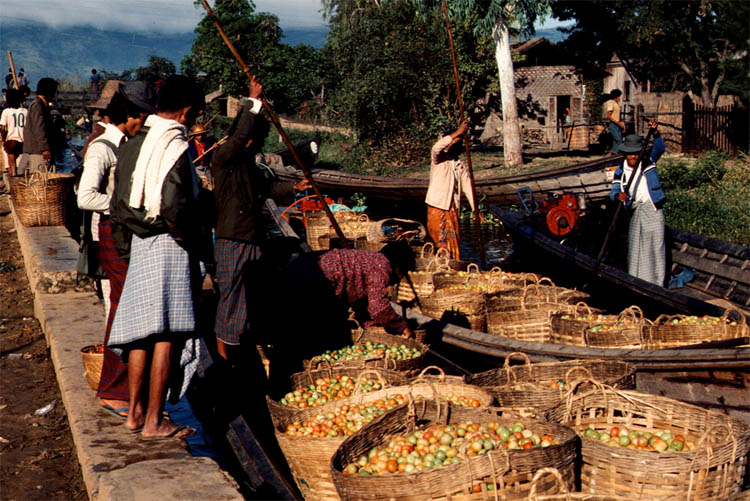
| Here all tomatoes from the swimming gardens are for sale
|
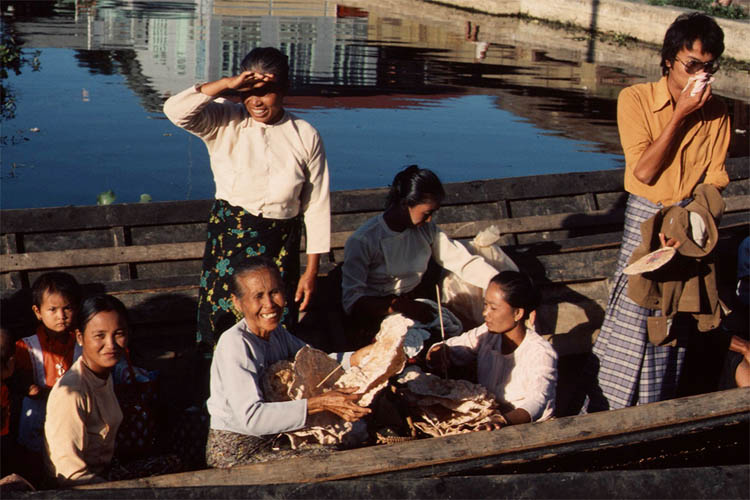
| What are these friendly people try to sell that seemed to smell
|
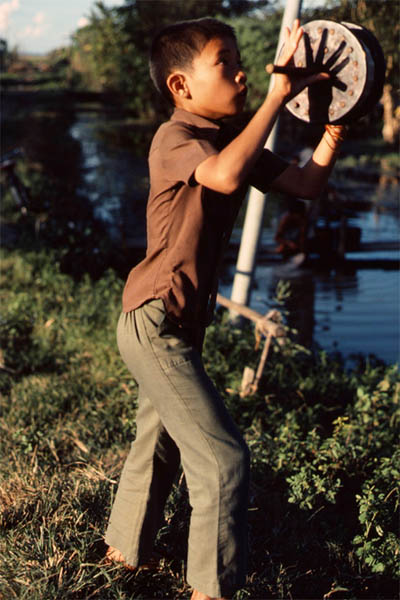
| Some boys can still play and let fly the kite
|
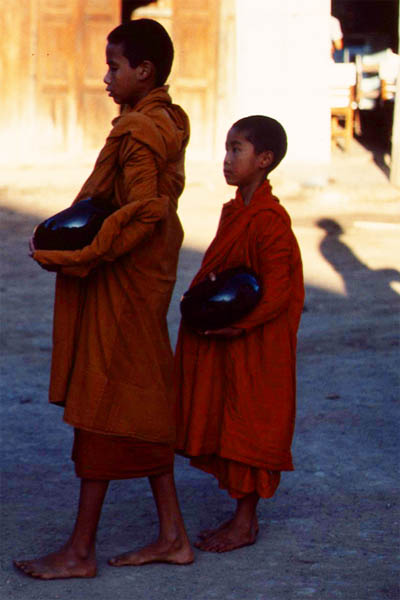
| Other boys must follow an old holy rite
|
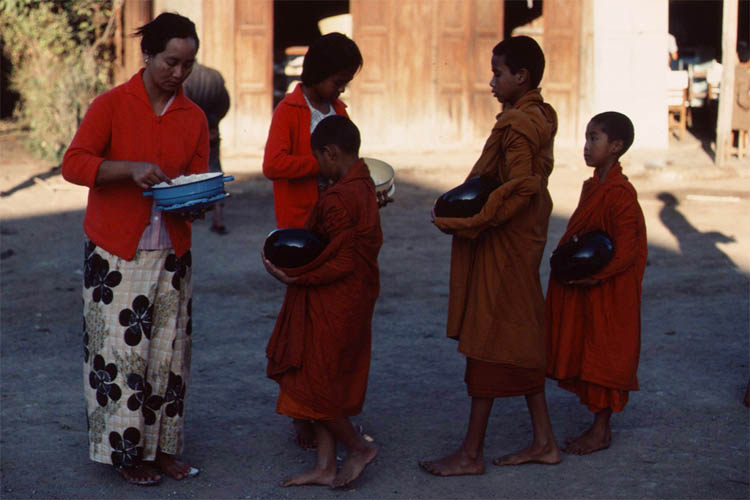
| Standing in line for their daily meal
|
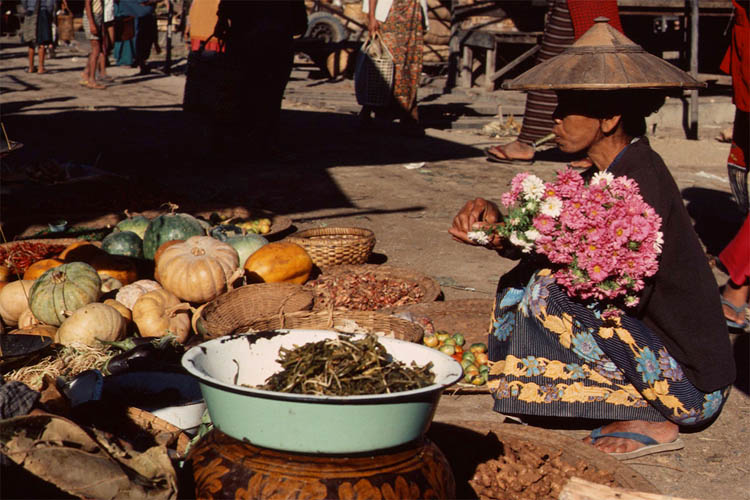
| Enough food around and the flowers are real
|
All the people here must be very diligent and have to work hard to make both ends meet, though. Many are still very poor to Western standard. Most live still the same way as their ancestors. The role of women is still archaic, but I have not seen so many laughing (and happy?) women in the Western world as here.
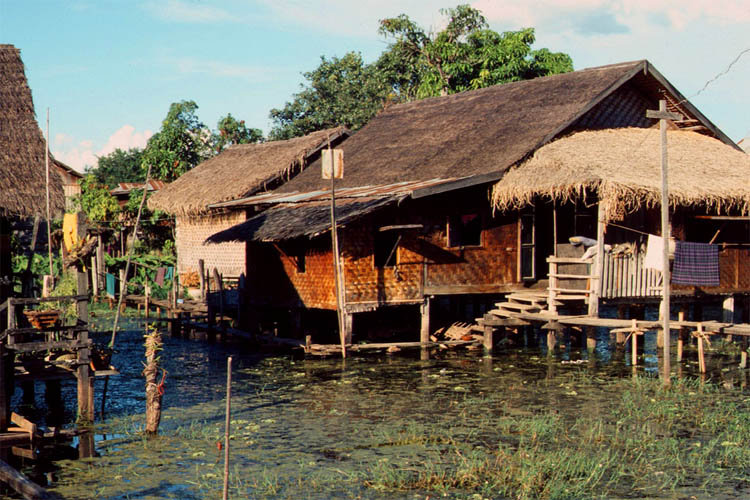
| Most dwellings look poor
|
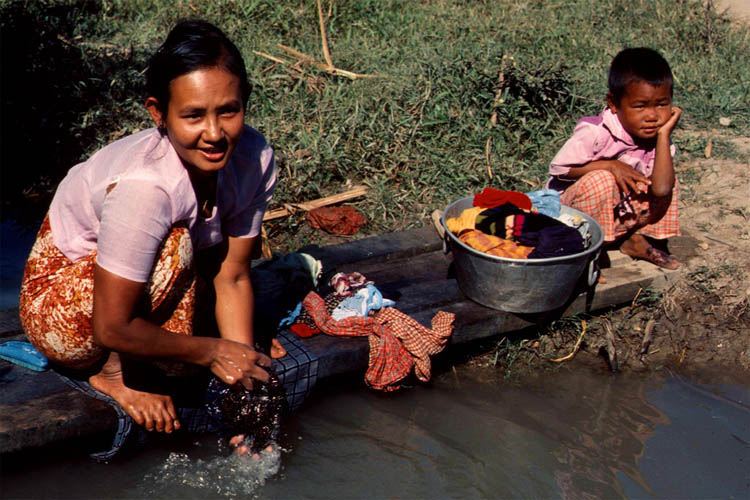
| and women doing their chore
|
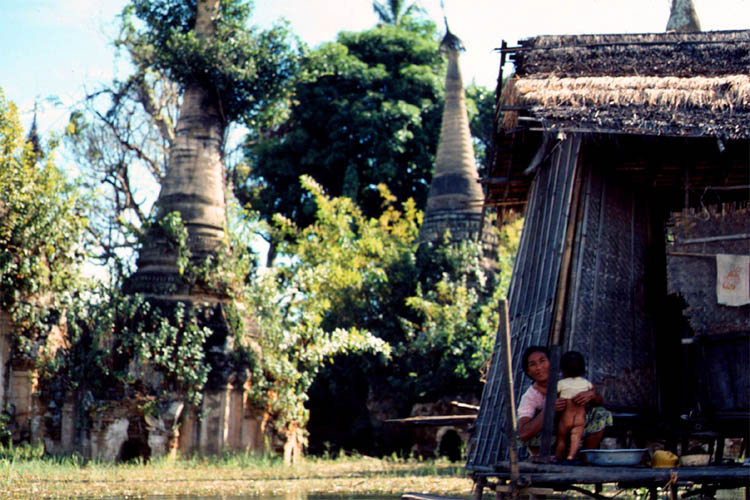
| But religion can overcome all misery
|
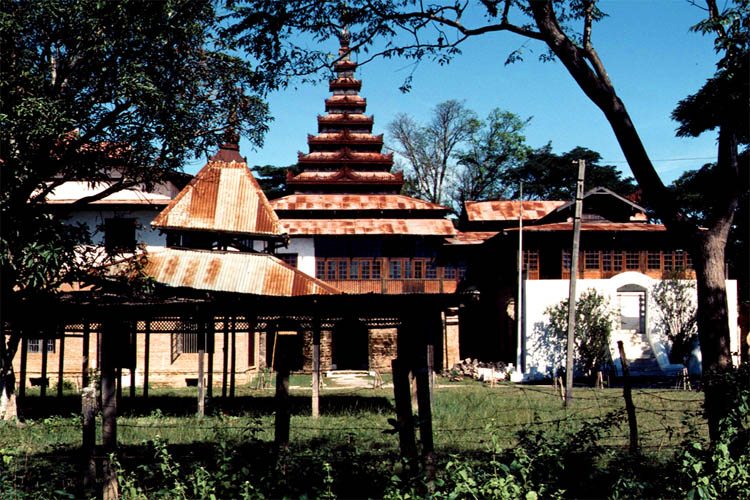
| The old museum shows their history
|
This town even had a museum. It was old, it was small, but it was interesting, especially the huge paintings on the wall depicting the rich life in the past, but also the cruelty of war.
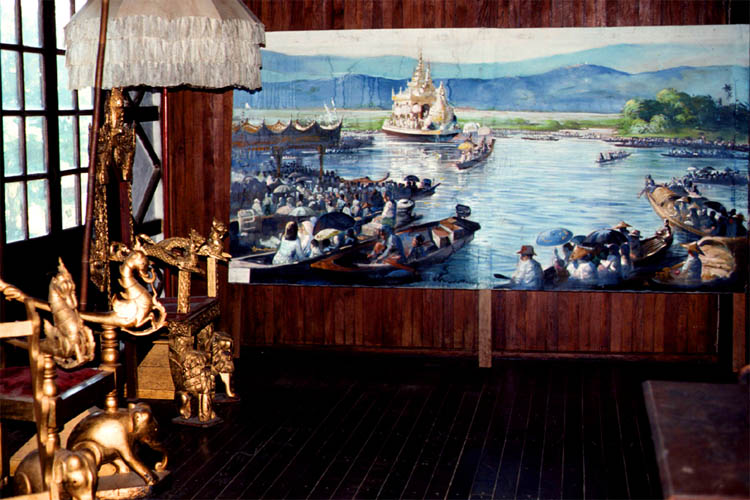
| A rich festival in the old days
|
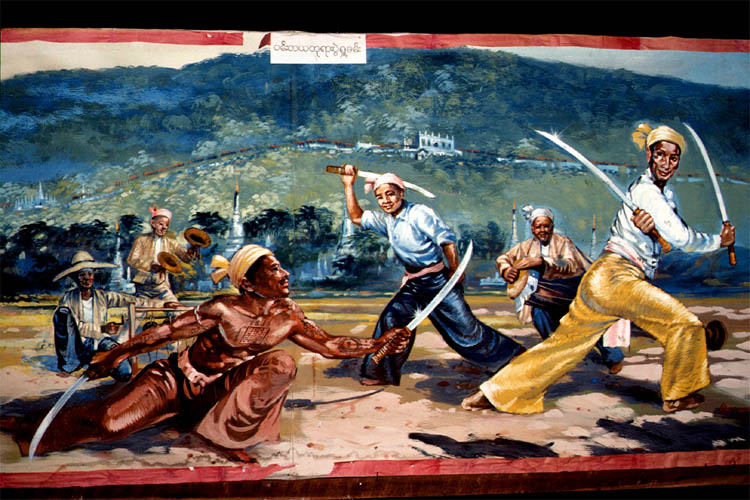
| defending it the old ways
|
Finally getting on the road to Mandalay. But not right away. Actually we had booked a flight to Mandalay from the next airport in Heho with Burma Tourist (paid in USD, of course), because time was short. But we shouldn't have done it. When we arrived at the airport we were told that the flight was cancelled and we will be driven to Mandalay with a bus. Refund? No way. This was a communist country but with the worst capitalistic attitude. So we had another torturous ride and lost half a day in Mandalay.
We asked the official tour guide of Burma Tourist (accompanying us) about the incident in Taunggy the night before last. Answer: The shooting came from a firework for the opening of the festival!!!
Then another last straw: Arriving in Mandalay, the Tourist Burma guide wanted us to stay in some kind of a 5 (better 3 to 4) star hotel of Burma Tourist, to be paid in USD. We protested and, while still arguing, just left the scene by foot to walk to one of the few guesthouses listed in the guide book, where we paid with Kyat, so what.
Next morning we then hired our own and private and not Burma Tourist controlled pedi-cabs (or pedal pushed tricycle taxi cab). One for Birgitta and one for me from a father and son.
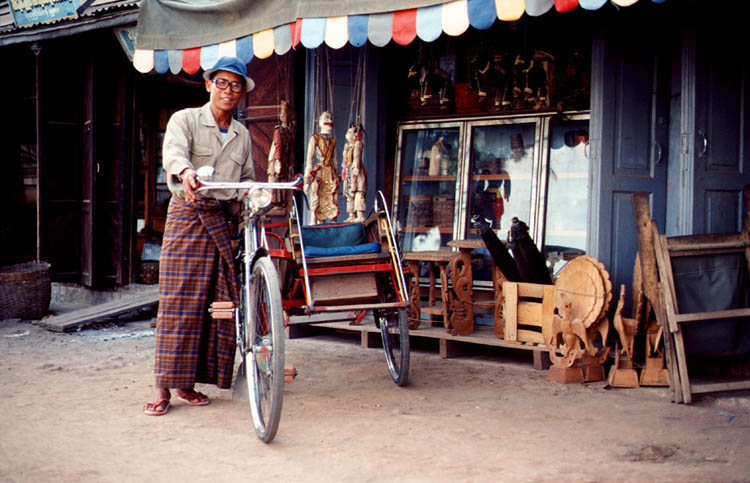
| This is my guide for touring the city
|
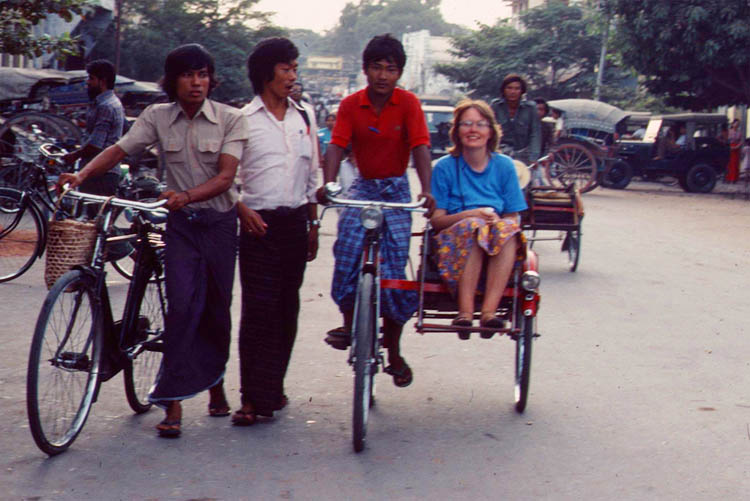
| That's his son with his bike and Birgitta
|
And then we toured the city of Mandalay from one end to the other the whole day with them while visiting all the famous sights. At first we were brought to the base staircase going up to the top of the Mandalay Hill.
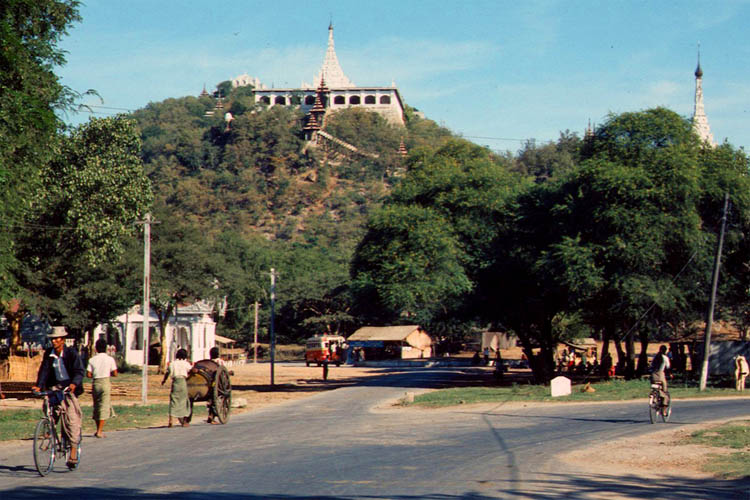
| Finally Mandalay Hill
|
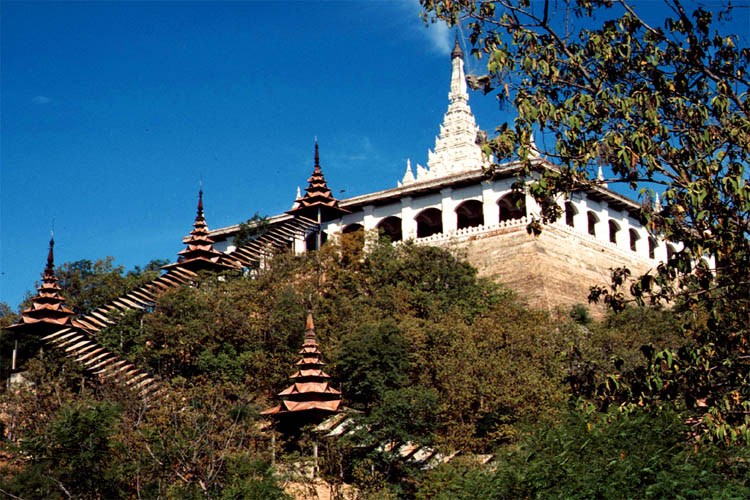
| Climbing is a must
|
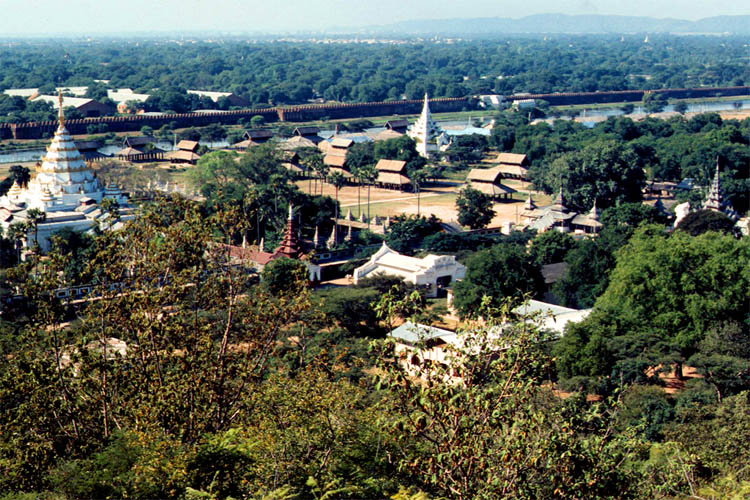
| Not just for the view down
|
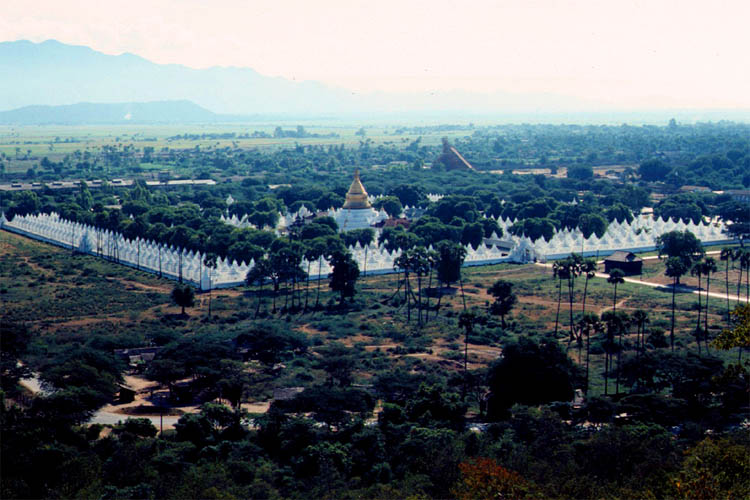
| it also makes you live long
|
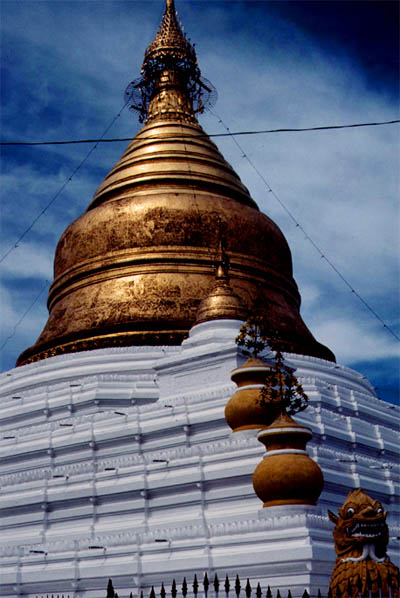
| A golden pagoda on top
|
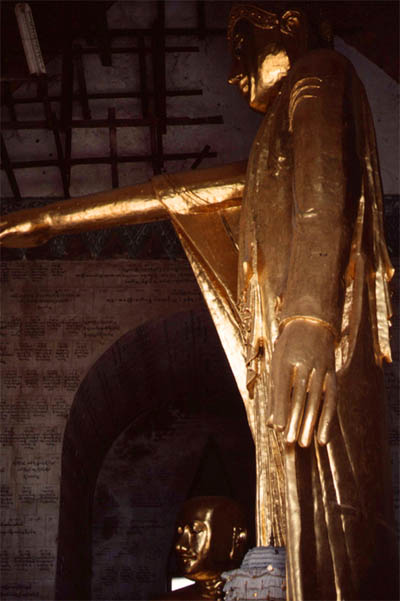
| A golden Buddha at a stop
|
The people of Burma are very religious and they not only believe in Buddha but also in many kinds of holy animals, with the snake as one of them.
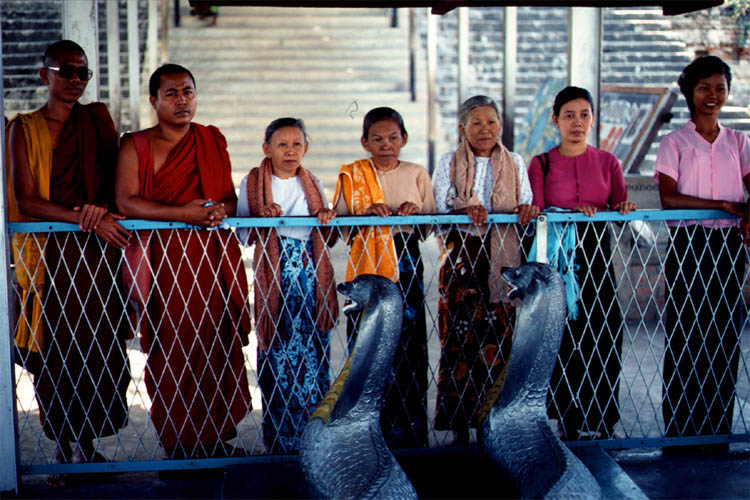
| People worship snakes
|
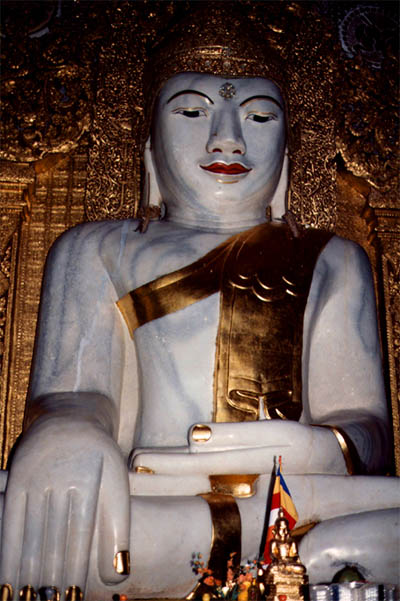
| beside the Buddha
|
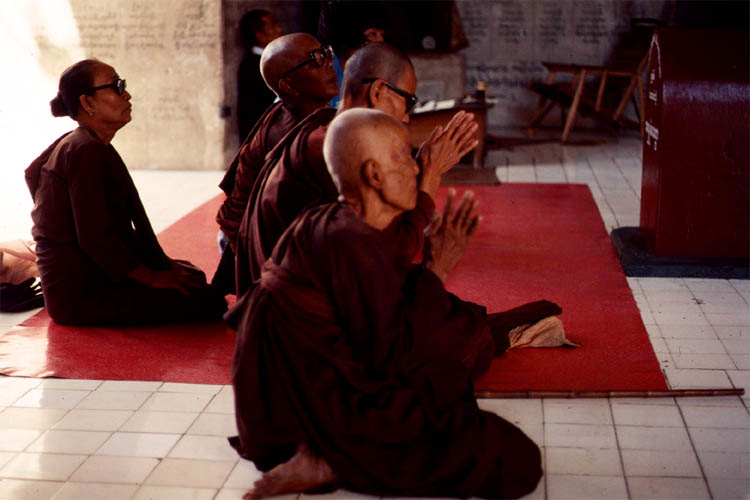
| One level we met monks praying
|
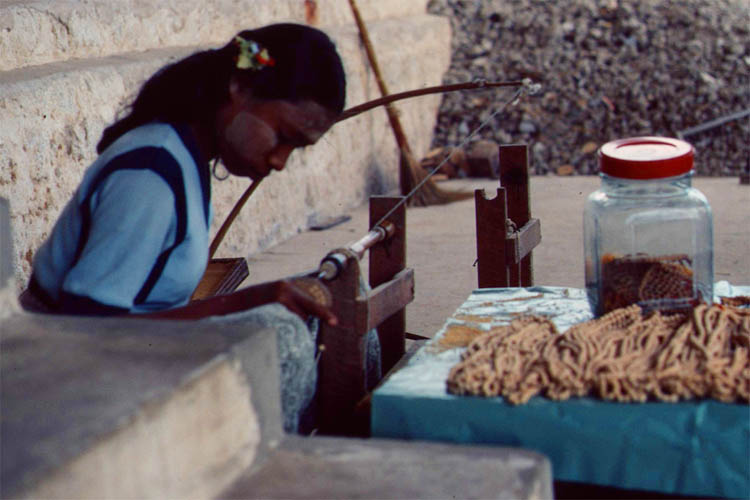
| on another one a girl was sawing necklaces
|
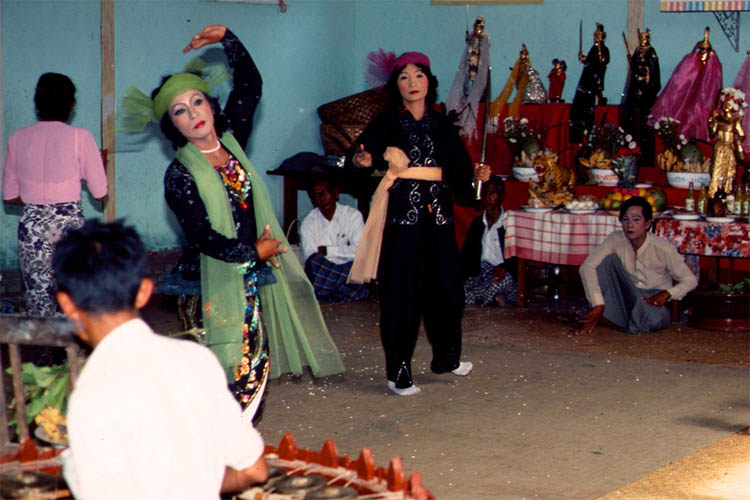
| Then we saw a dance perform-ance on the way down
|
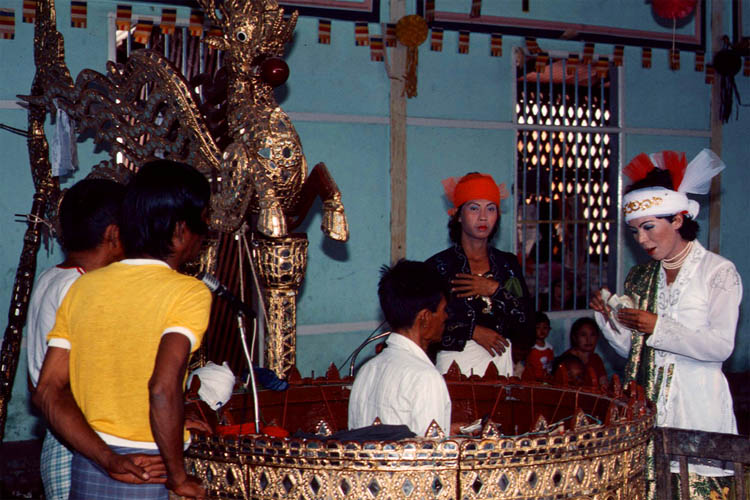
| must be a good business if counting money as shown
|
We saw a nice all white temple from the top and went there after we came back down. What a diligent work. All these many small temples in a row but more so the inscription in each niche. There are 729 of them. The biggest book in the world. Fortunately, I couldn't read it. To know every aspect of Buddha's life it would have taking me a month.
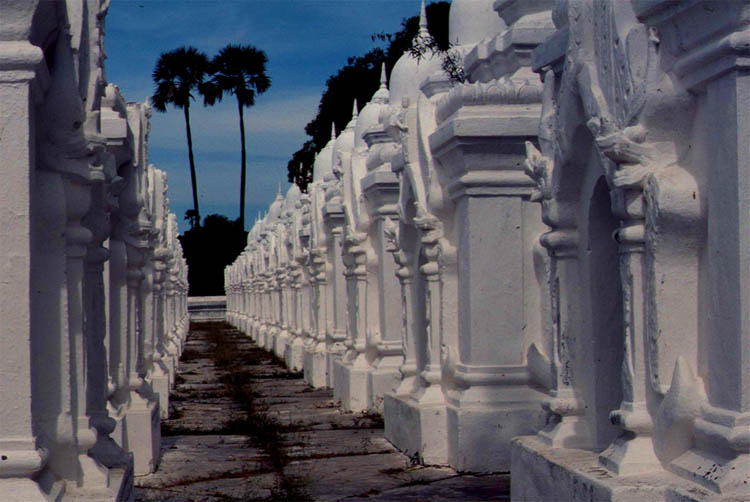
| A huge area with many small white temples
|
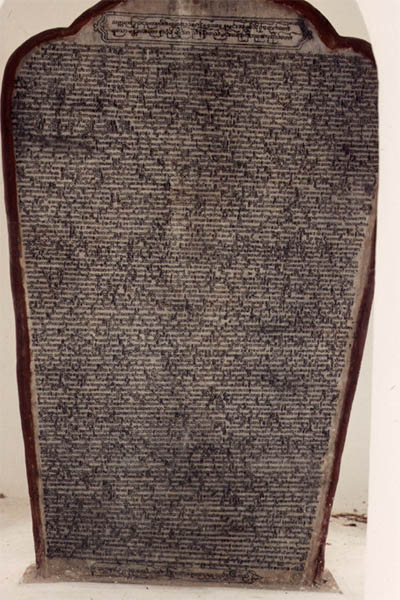
| each with a script table in every niche
|
Buddhism is everywhere around whether nuns walking the street or young girls hoping for a happy life by pouring water over holy Buddha figures.
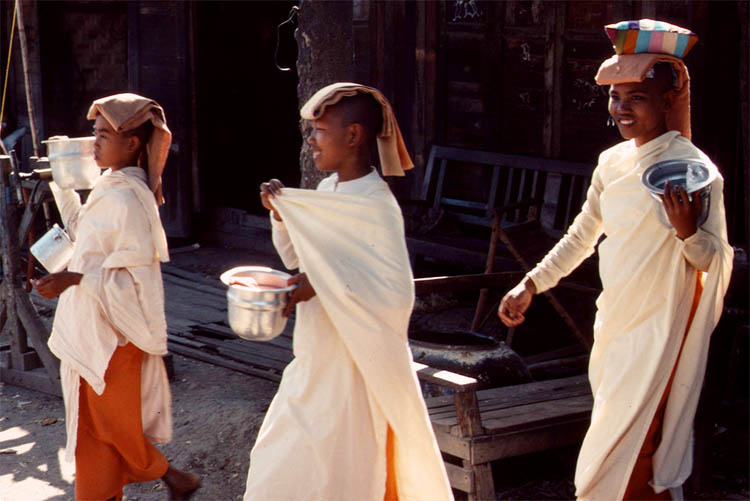
| Young nuns with a different outfit than monks
|
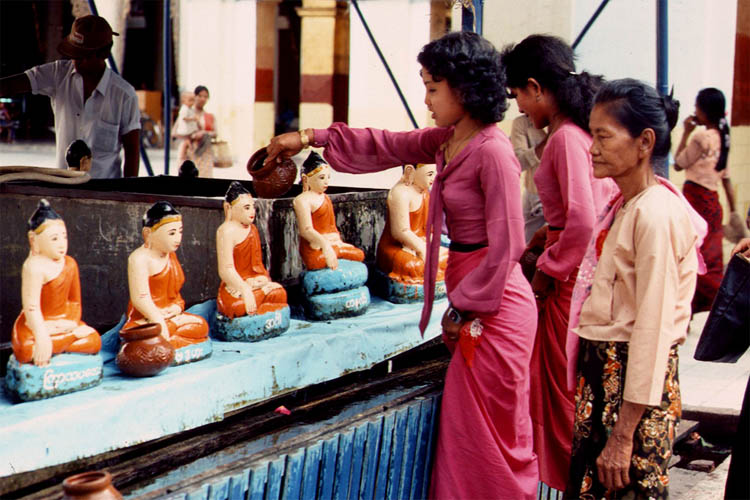
| Girls dressed nicely pouring water over small Buddhas
|
There is nobody hitting the big gong whatever it will supposed to mean, because the description doesn't tell me a thing. But what I can see, is that the basket is full of dried grasshoppers. A delicacy? But not for me.
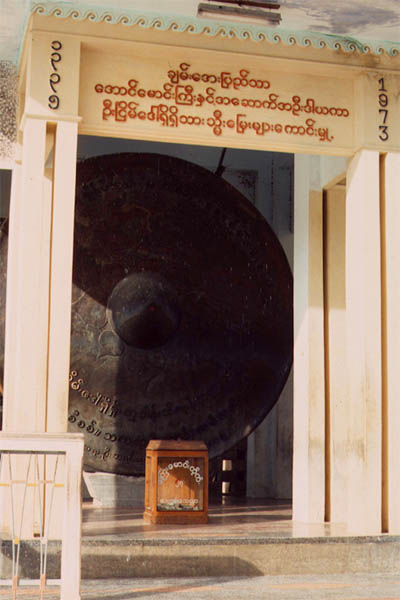
| This is a big gong
|
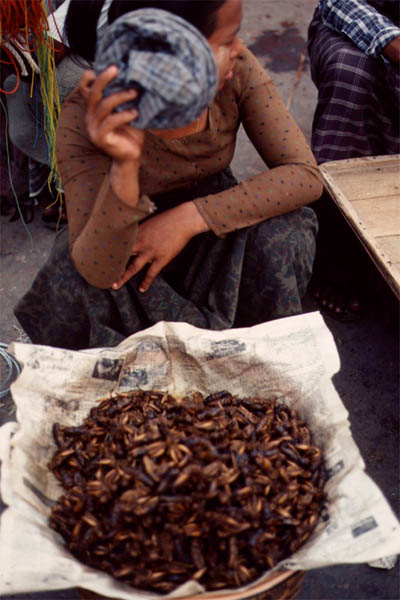
| And this dried grasshoppers
|
It's a very interesting market place. You get almost everything. Fish from the faraway sea, but it should be better dried in the heat. It smells terrible but it's delicious to eat, if prepared alright. Because the mountains are not far, to wear woolen clothes is also advised.
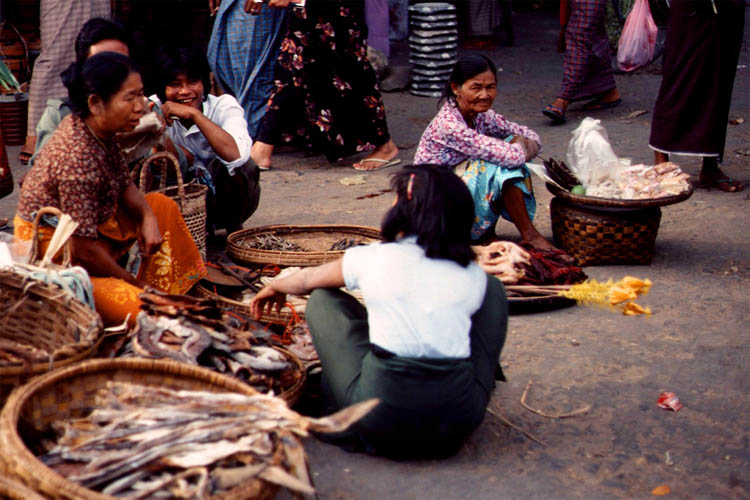
| Rather eating any kind of dried fish
|
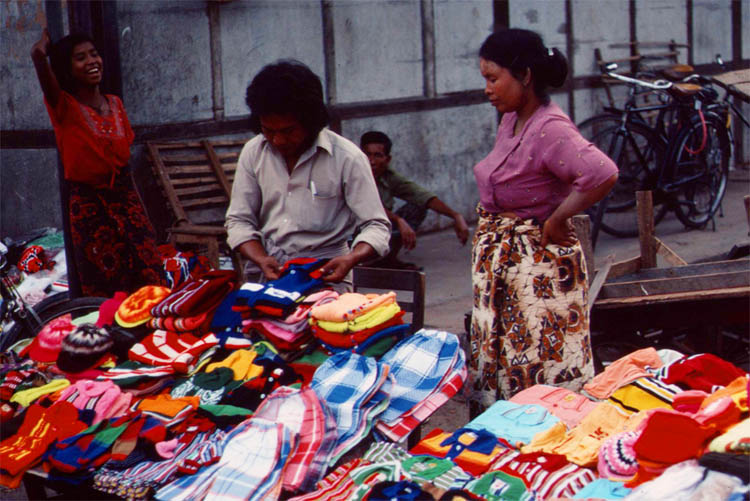
| or buying and wearing warm clothes
|
Yes, elephants are living in Burma, too (though I haven't seen any). Ivory is thus also a highly valued commodity for export (like gems), but probably not to Western countries, where imports are not allowed because of the animal protection of endangered species law.
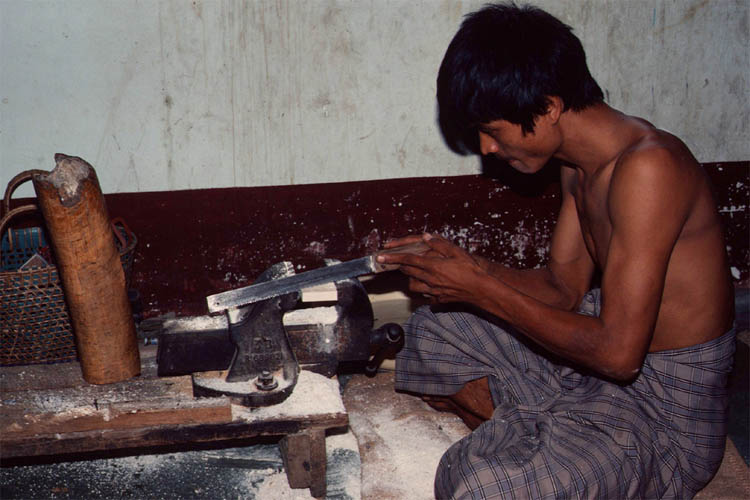
| Visiting an ivory factory
|

| where figures are carved
|
It's getting time to pick up our luggage from the guesthouse and rush to the railway station for the night train to Rangoon. The ticket we also had to pay in USD, because the railway is also state owned. No sleeping berth like on the Thailand trains. But sleeping in the reclining seat was ok, and we were tired enough to fall asleep soon.
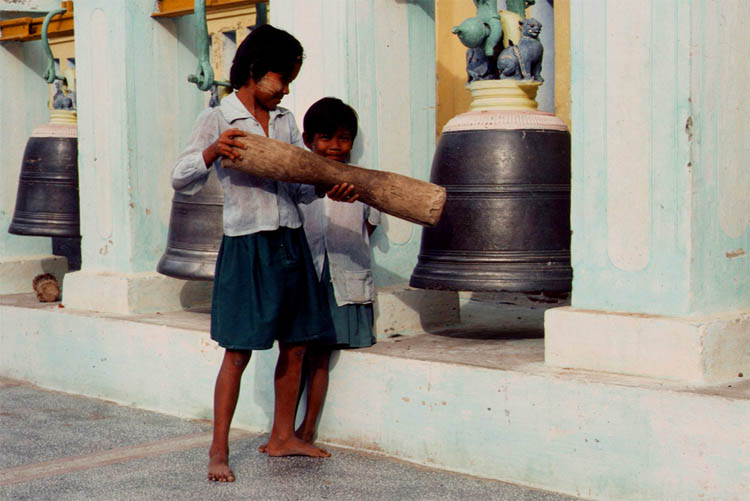
| The kids are ringing the big bell in the very late afternoon
|
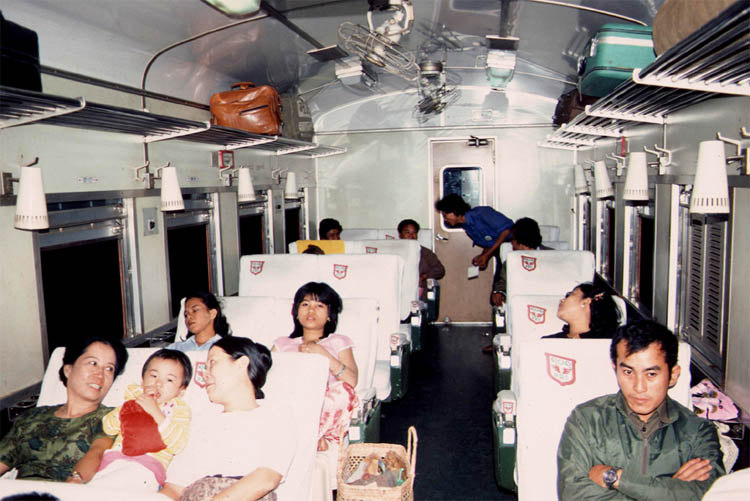
| it's time for us to get to the station and on the train to Rangoon
|
We arrived early in the morning and rushed to our YMCA to stay there one more night before flying back to Bangkok. We could have but we didn't stay at the Strand, but we had a drink there under old fans from the colonial times and you could feel like Rudyard Kipling and Somerset Maugham who both stayed here once.
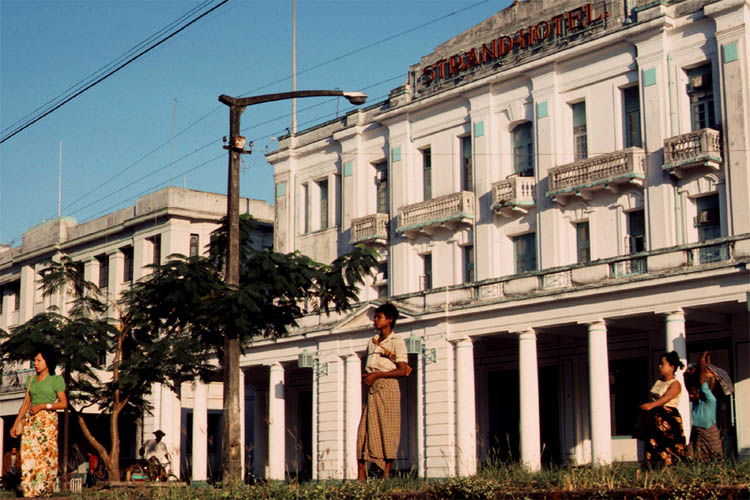
| Staying at the Strand?
|
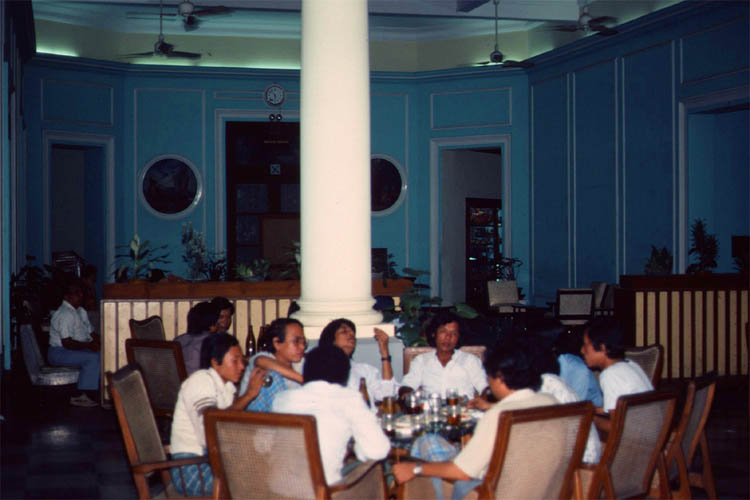
| With its colonial flair
|
We had a whole day, the last, for sight-seeing. First on the agenda, of course, was visiting the Shwedagong Pagoda. I have written enough about it in my travel report of 2004.
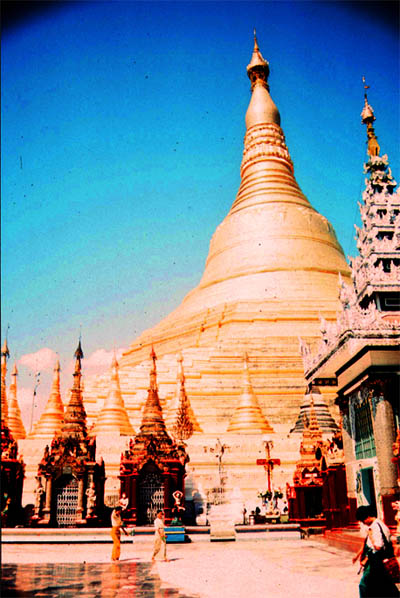
| Now we can visit the most sacred pagoda
|
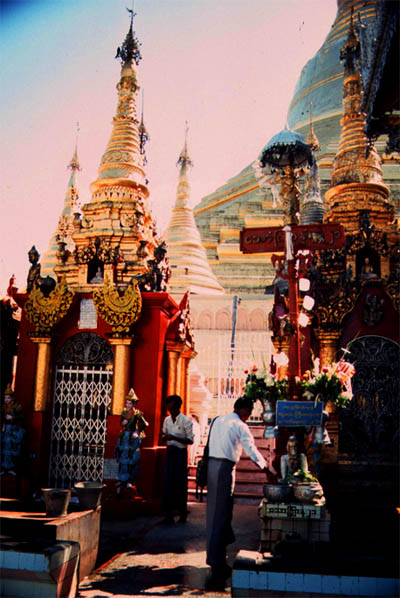
| In Rangoon it's the Shwedagon pagoda
|
Another nice pagoda was the Sule pagoda right in the middle of town. And a very interesting sight with a Reclining Buddha was a little bit off the center.
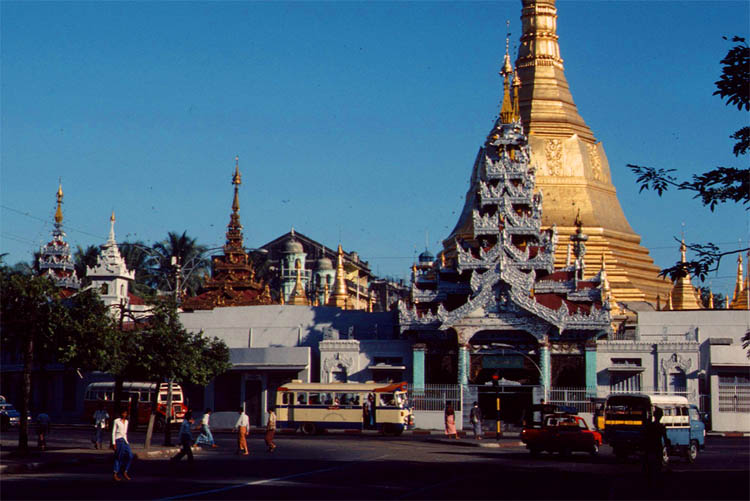
| The smaller Sule pagoda
|
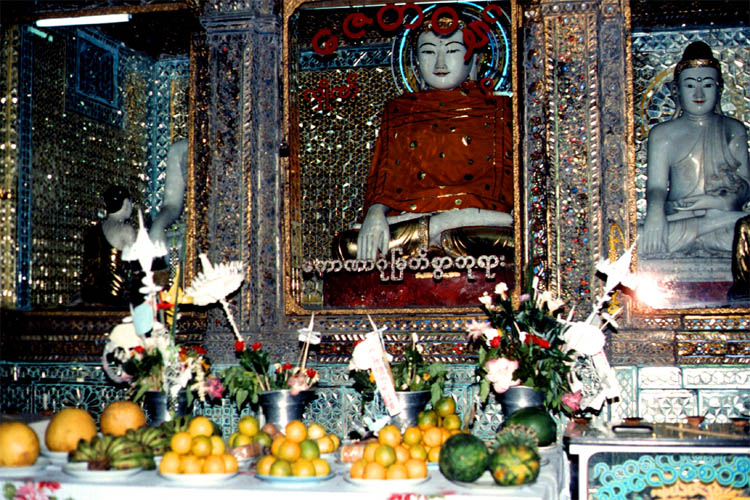
| with a nice Buddha altar
|
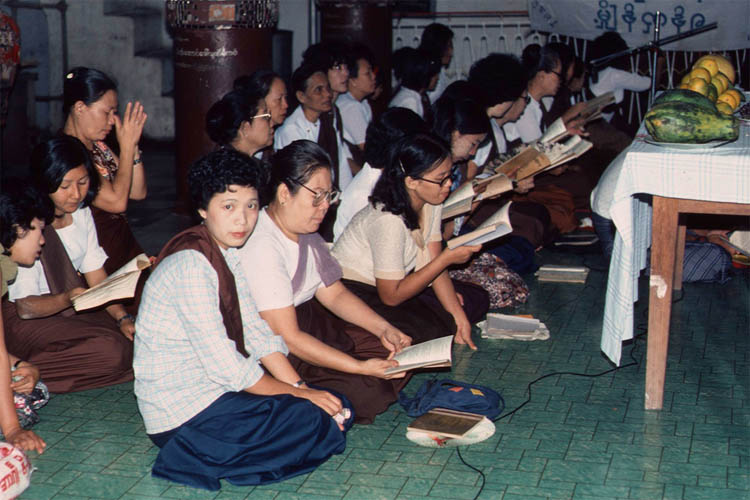
| Worship
|
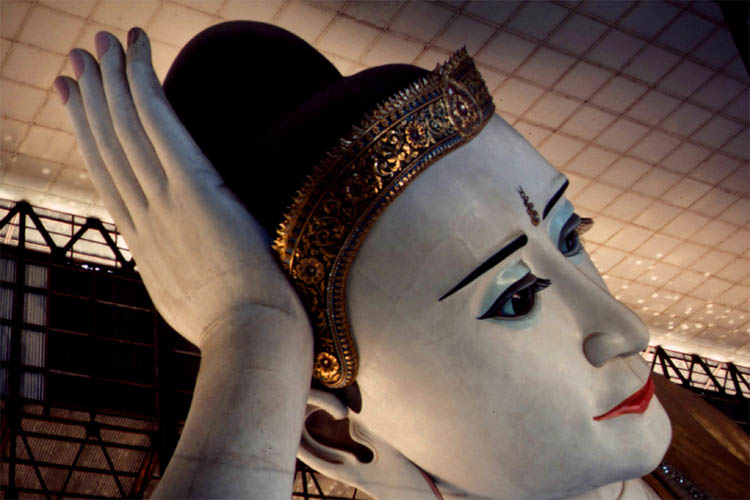
| Reclining Buddha
|
The rest was just walking in the streets of Rangoon. This city must have been a jewel during the British rule. The houses still give an idea of the past splendor. But unfortunately everything shows cracks with sprouting weeds from all crevices. The communistic state has no money for maintaining colonial remnants but instead of tearing them down they at least let it inhabit with a kind of South East Asian flair.
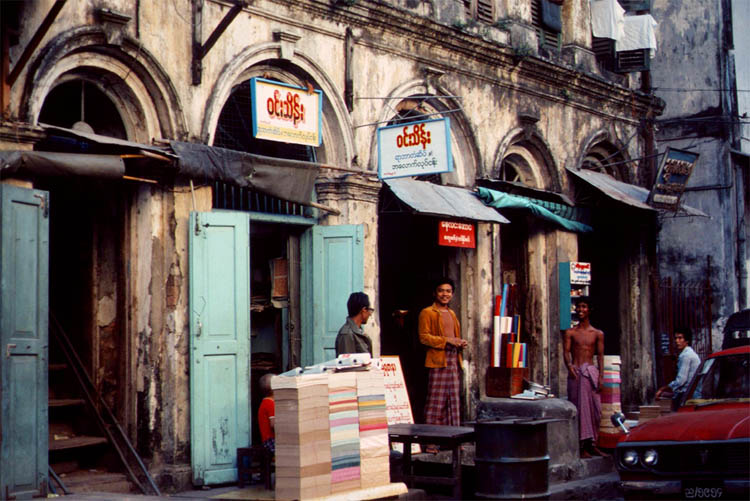
| Shops in old colonial decaying houses
|
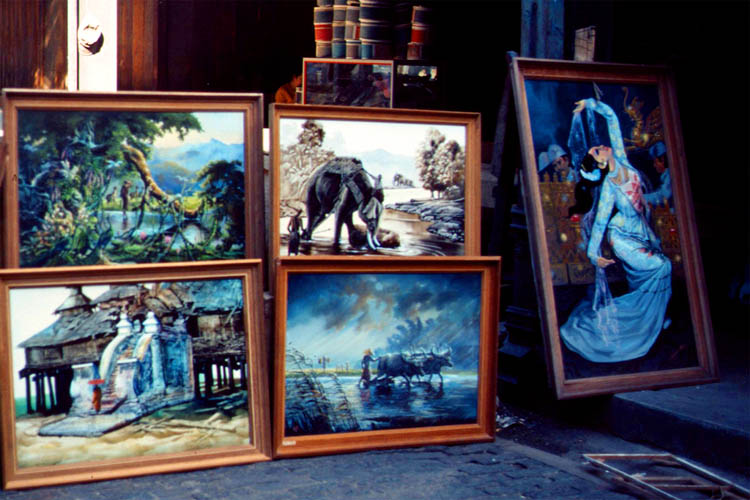
| Another one sells Burmese paintings
|
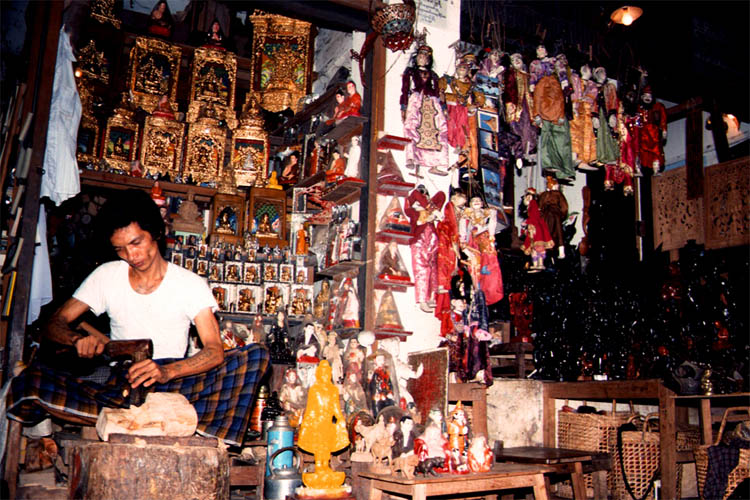
| Also here in another communist country: free enterprises
|
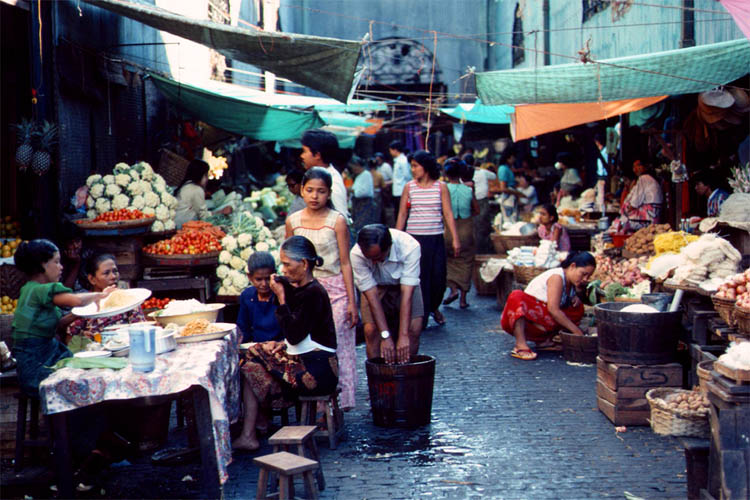
| There seemed to be still enough to eat: fruits and vegetables
|
In the late afternoon, the sun was already getting down, we leisurely strolled around the harbor. Many food stall opened up for the people coming for their last supper. We decided to eat in the canteen of the YMCA .
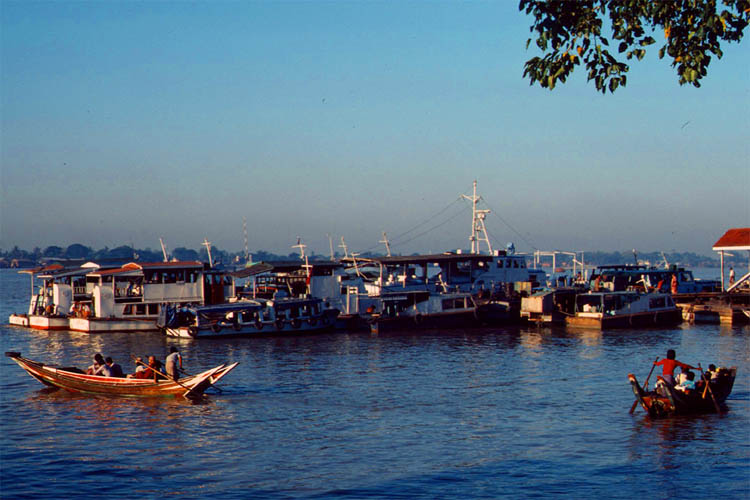
| Final glimpse of the Rangoon harbor
|
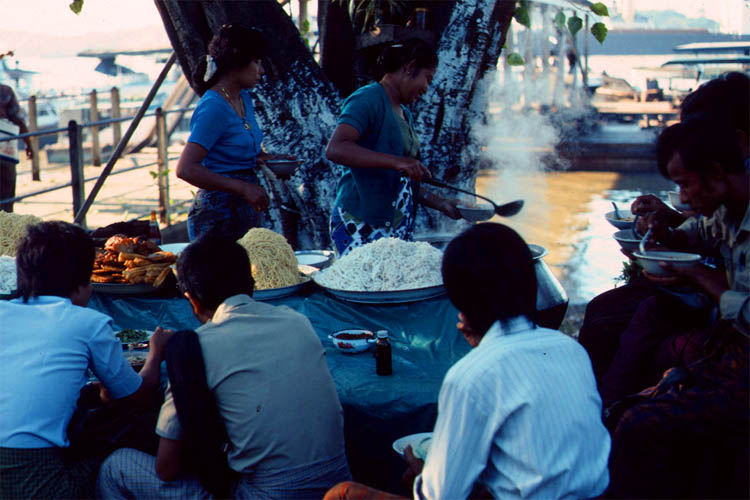
| Shall we have dinner here or in the YMCA?
|
In the late evening we paid another visit to the Sule pagoda, which was filled with a lot of people for their last prayer. After that we stranded in the Strand to spend our last Kyats for our last beers while listening to the band and almost being lulled into sleep ready for the night in our YMCA.
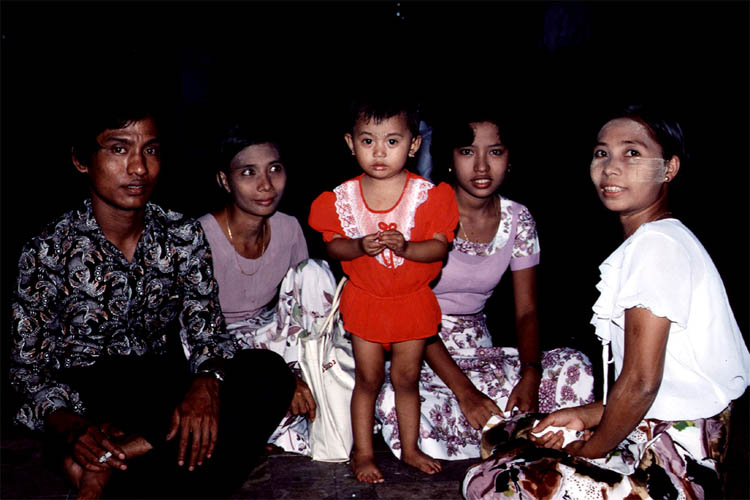
| In the temple we met this Burmese family
|
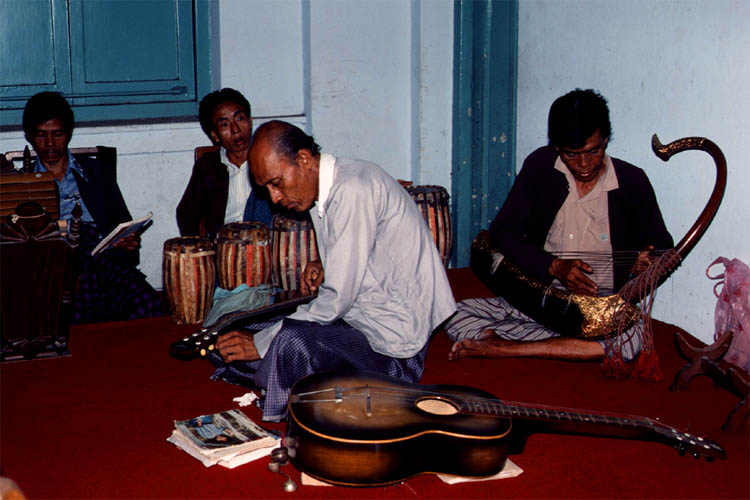
| In the Strand we listened to a musical band
|
Ok, that was Burma, though still only a small part of it.
There could have been seen and done a lot more. Also I could have written more. If you want to know more all about the places I have visited, then just look up any of the many guidebooks or in the internet.
| 











































































































